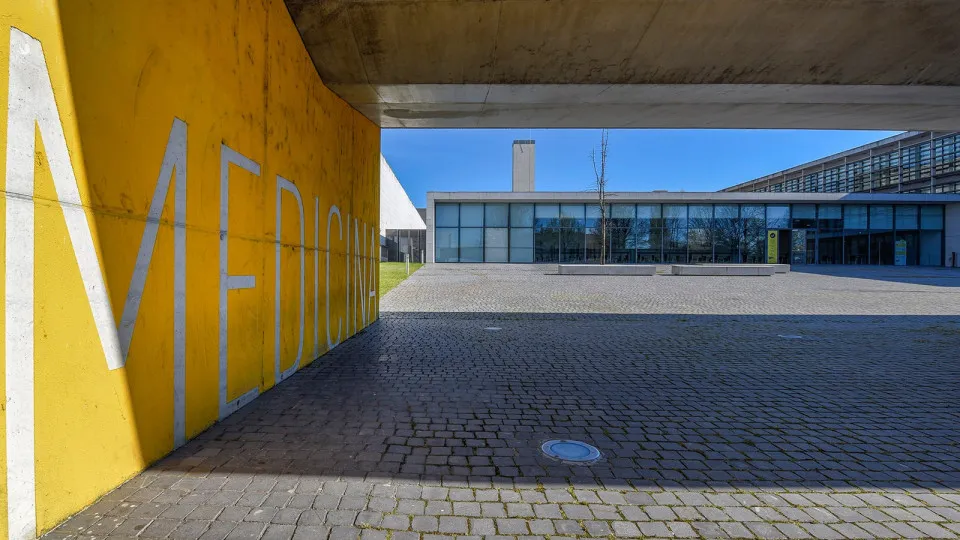
Portugal’s calendar is filled with vibrant festivals that celebrate the country’s rich culture, music, history, and religious traditions. From north to south (and on its islands), almost every month offers a unique festivity. Below, we explore the must-see annual festivals in Portugal region by region – covering everything from centuries-old religious romarias to modern music mega-festivals. Whether you’re drawn to colorful street parties, medieval fairs, foodie feasts or world-class concerts, Portugal’s festivals offer unforgettable experiences throughout the year.
In Northern Portugal, festivals blend deep-rooted tradition with lively celebration. The region is famous for its romarias (religious pilgrimages), folk fairs, and some of the country’s biggest street parties. Here are the North’s unmissable festivals in roughly calendar order:
Where: Podence (Macedo de Cavaleiros), Trás-os-Montes – Carnival season (3 days before Lent)
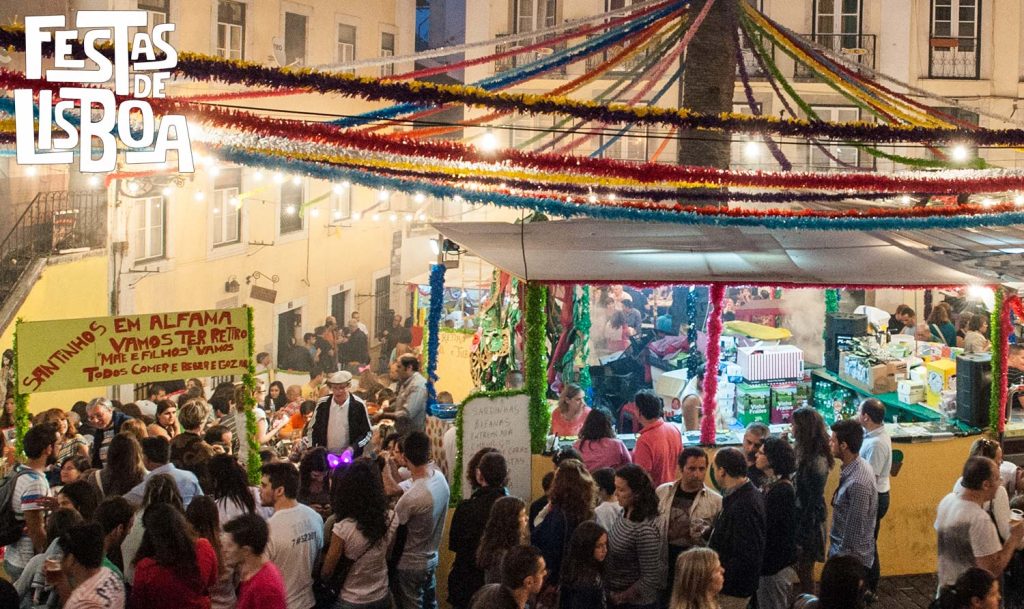
What: A wild carnival famed for the Caretos de Podence, mischievous characters in vibrant fringed costumes and tin masks. To mark the end of winter, these “devils” run through the village rattling cowbells and playfully ambushing passers by. It’s an ancient pagan rite of spring that survived Christian era; in 2019 UNESCO recognized the Podence Carnival as Intangible Cultural Heritage of Humanity. Expect three days of exuberant antics, folk music, and old traditions revived – truly one of Portugal’s most colorful carnivals.
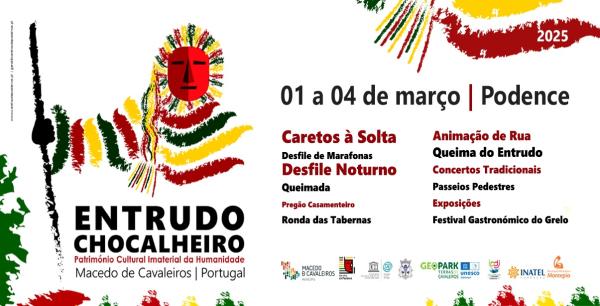
The official website: https://www.caretosdepodence.pt/node/275
Where: Braga – Week leading up to Easter (March or April)
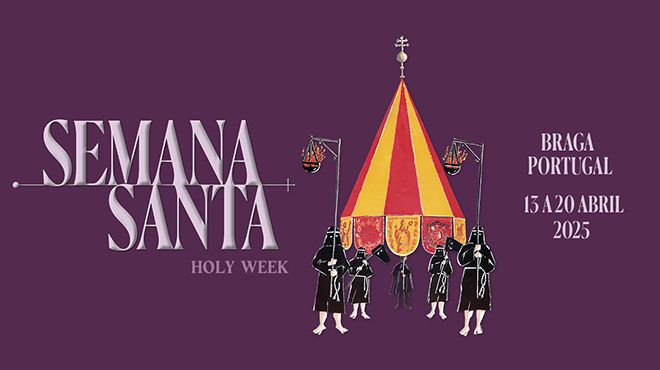
What: The Holy Week in Braga is Portugal’s most famous Easter celebration, with origins dating back to the 16th century. Throughout the week, the city holds solemn liturgical ceremonies and processions, including the haunting “Ecce Homo” night procession with barefoot penitents. This was one of the first major Holy Week festivals in Europe and is now listed as national cultural heritage. Thousands of visitors flock to Braga’s baroque old town to witness candlelit parades and ancient rituals that showcase the city’s devout heritage.
Where: Porto – Night of June 23 to June 24
What: Porto’s biggest annual party. On Midsummer night, the city erupts in a massive street festival honoring St. John the Baptist – though its roots are pagan, celebrating the summer solstice. Residents and tourists pack the streets of the Ribeira and old neighborhoods, grilling sardines, dancing, and bopping each other on the head with plastic hammers or garlic flowers – a quirky tradition symbolizing good fortune. At midnight, fireworks explode over the Douro River and thousands of illuminated paper lanterns (balões) are released into the sky. The party then lasts till dawn, with many ending the night at the beach to watch the sunrise (and even taking an early swim). São João in Porto is often cited as one of Europe’s liveliest street festivals, drawing revelers by the tens of thousands.
Where: Braga – June 23–24
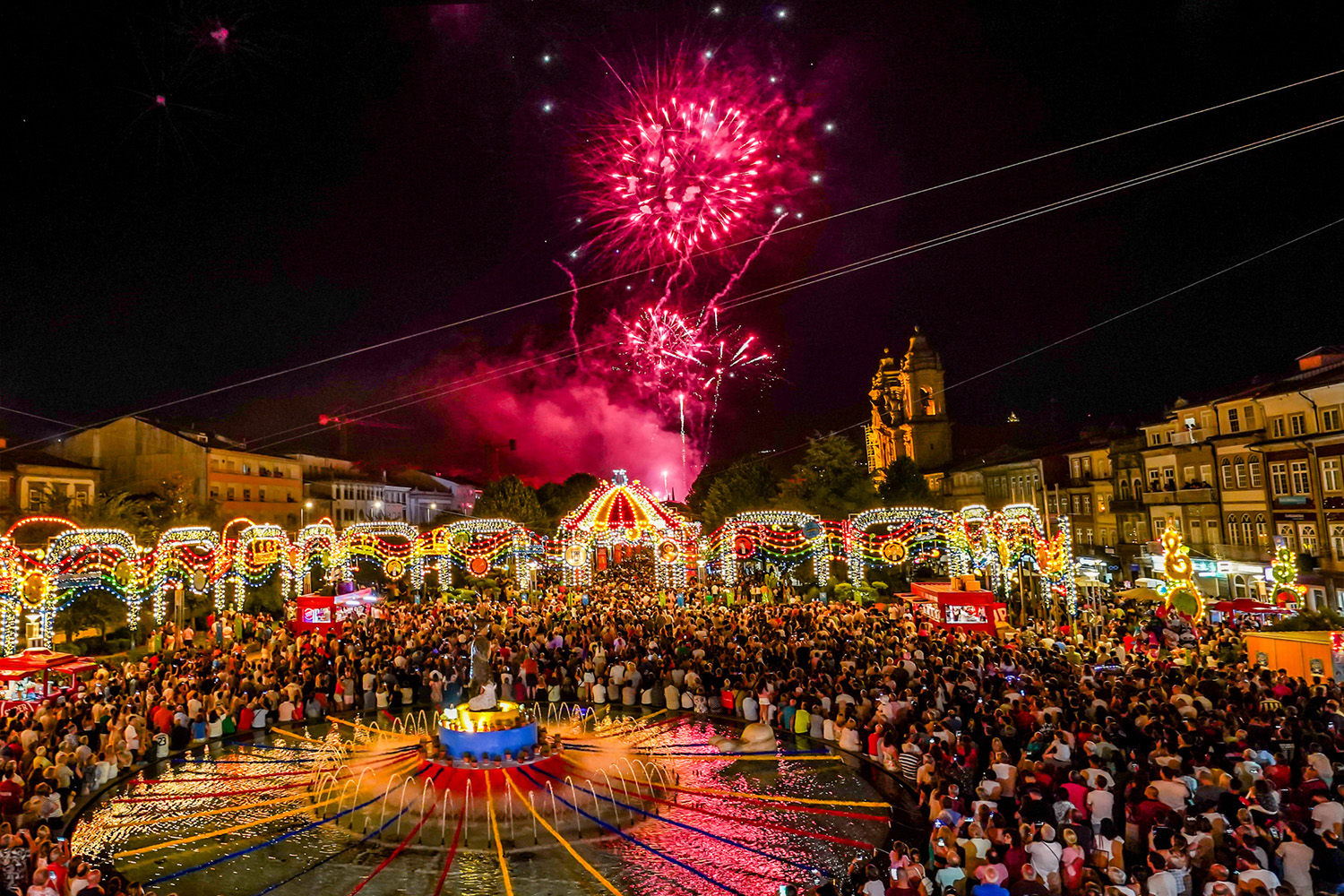
What: The city of Braga also celebrates São João with its own grand festivities. In fact, Braga’s St. John festival – honoring St. John the Baptist – is the largest traditional festival in Minho province and “the biggest event of the year in the district”. Starting in mid-June and peaking on the night of 23rd, it features folk parades, gigantone puppets, street dancing, and concerts, all culminating in a solemn religious procession on June 24. Braga’s streets fill with basil plants and paper flowers, and like Porto, locals indulge in midnight fireworks and sardinhadas (grilled sardines). It’s a more traditional, family-friendly counterpart to Porto’s rowdy street party, but just as steeped in local culture and joy.
A Maior Festa Popular de Portugal
Where: Viana do Castelo – Around August 20 (lasting 3–4 days)
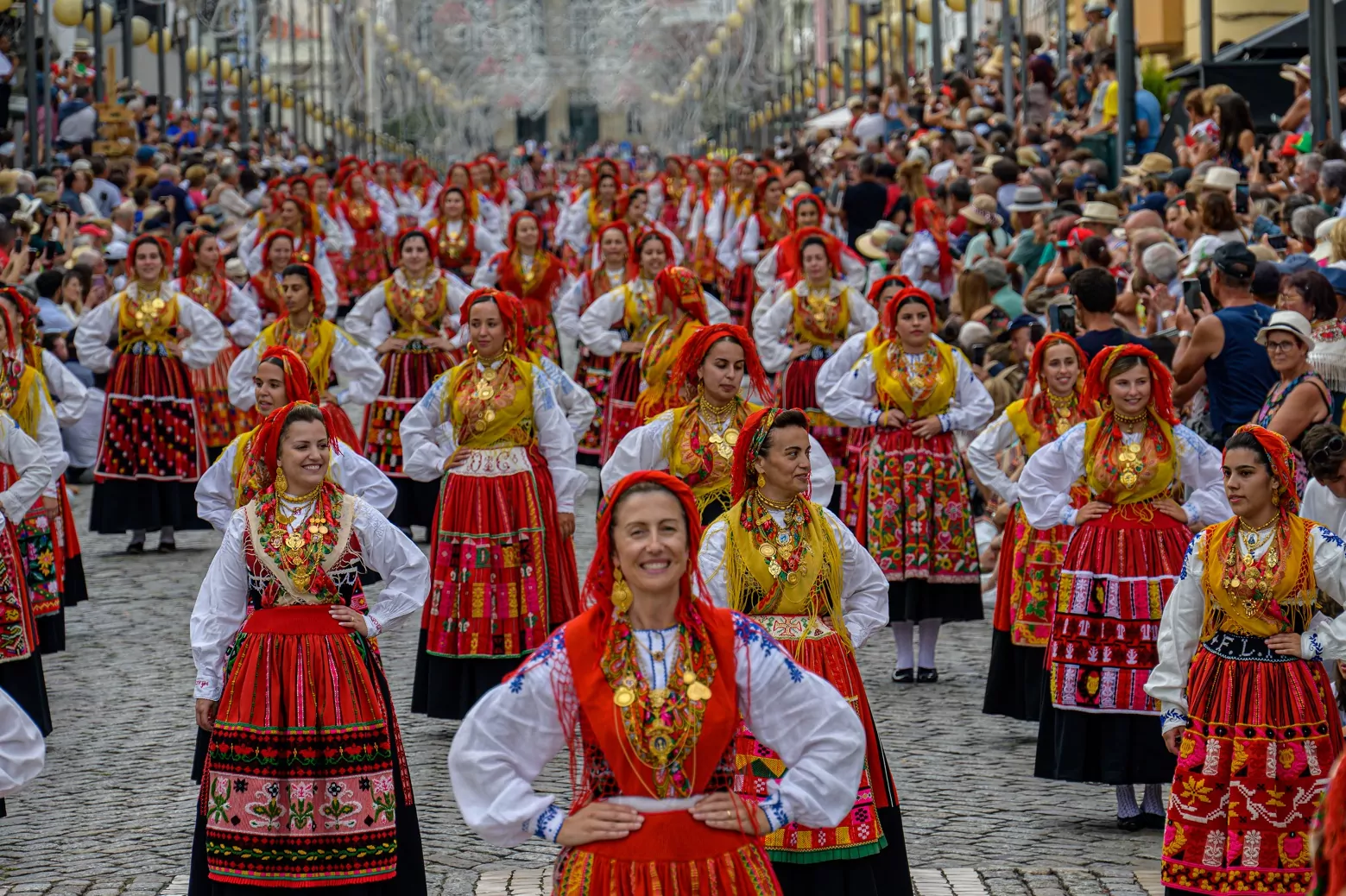
What: An epic religious and folk festival often called the biggest romaria in Portugal. This festival honors Our Lady of Sorrows (Nossa Senhora da Agonia), the patron saint of fishermen. By the Douro River in Viana, processions of richly costumed women (wearing traditional gold filigree), folk music groups, and flower-carpeted streets create a dazzling scene. Highlights include the ethnographic parade, nighttime firework shows, and the spectacular parade of richly decorated ox-carts. It’s a true showcase of Minho culture – the city’s population swells with visitors enjoying the folklore, crafts fairs, and an atmosphere of devotion mixed with celebration. The Romaria d’Agonia is “one of the largest pilgrimages in Portugal”, famous for its heartfelt procession to the sea where fishing boats are blessed.
Romaria de Nossa Senhora d’Agonia
Where: Ponte de Lima – Second weekend of September
What: The Feiras Novas (literally “New Fairs”) is Portugal’s oldest folk festival, celebrated annually since 1826 by royal decree. For three days (and many nights), the charming town of Ponte de Lima turns into “the greatest live congress of popular culture in Portugal”. Festivities include folk dances, gigantones e cabeçudos (giant papier-mâché figures) roaming the streets, brass bands, fireworks, and even traditional horse and ox cart races. Originally a harvest fair in honor of Our Lady of Sorrows, Feiras Novas still features an agricultural fair and livestock contests alongside the fun. The whole town becomes a stage for spontaneous singing and dancing, with locals in traditional costumes filling every corner with music and joy. It all culminates in a grand Sunday procession that closes the Alto Minho festival season. If you want an authentic taste of Minho’s folk spirit, Feiras Novas is not to be missed.
Where: Vilar de Mouros (Caminha) – Last weekend of August
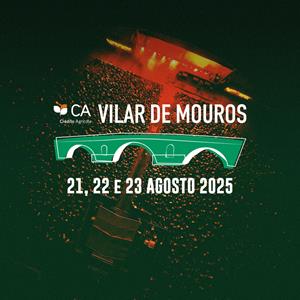
What: Vilar de Mouros is a legendary open-air music festival, known as “the oldest rock festival in Portugal and the Iberian Peninsula”. First held in 1965 as a folk event, it earned the moniker “Portuguese Woodstock” after its 1971 edition featuring international rock acts. Today, Vilar de Mouros continues every August on the banks of the Coura River, attracting rock, indie and alternative music fans. Big names (from Deep Purple and Scorpions to Suede and Iggy Pop) have graced its stage (visao.pt). Despite growing in size, it retains a laid-back rural vibe – camping under the trees, daytime dips in the river, and a friendly atmosphere. For music lovers, experiencing Vilar de Mouros is like stepping into rock history, where multiple generations gather to enjoy great music in a picturesque Minho village.
https://www.festivalvilardemouros.pt/
(Northern Portugal also hosts many other local festivals, such as the Festas Gualterianas in Guimarães every August, and dozens of smaller romarias in villages year-round. But the ones above are among the region’s most famous and travel-worthy.)
Central Portugal’s festivals are incredibly diverse – from student celebrations in Coimbra to medieval fairs in walled towns and major religious pilgrimages. This region (spanning Coimbra, Aveiro, Leiria, Santarém, etc.) offers a festival for every interest:
Where: Torres Vedras (Lisbon District) – Carnival week (Feb or early March)
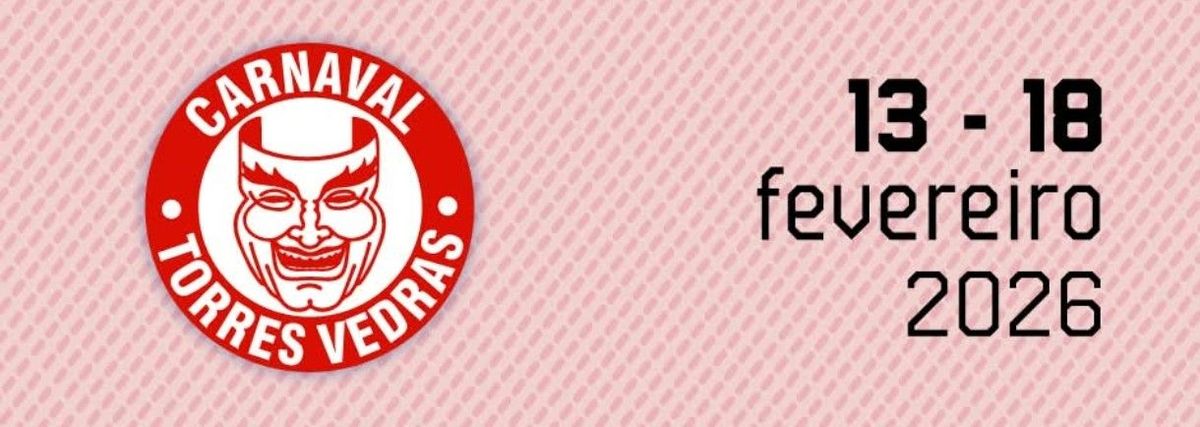
What: Billed as “the most Portuguese of Carnivals,” Torres Vedras Carnival is famous for its irreverent, home-grown traditions. Rather than samba schools, you’ll see locals in creative satirical costumes lampooning politicians and social themes. Key characters are the “Matrafonas” – men hilariously cross-dressed as exaggerated women – and huge cabeçudo heads. Each day features parades of floats (often poking fun at current events) and lively marching bands. Notably, on Shrove Tuesday a procession of “Enterro do Carnaval” (Carnival’s Burial) marks the end of the revelry with comic mourning. Torres Vedras’ carnival has been running since the early 20th century and prides itself on its authenticity and humor. If you’re near Lisbon in Carnival season, this city (just 50km north) is the place to experience a truly traditional Portuguese carnival.
Where: Coimbra – 1st or 2nd week of May
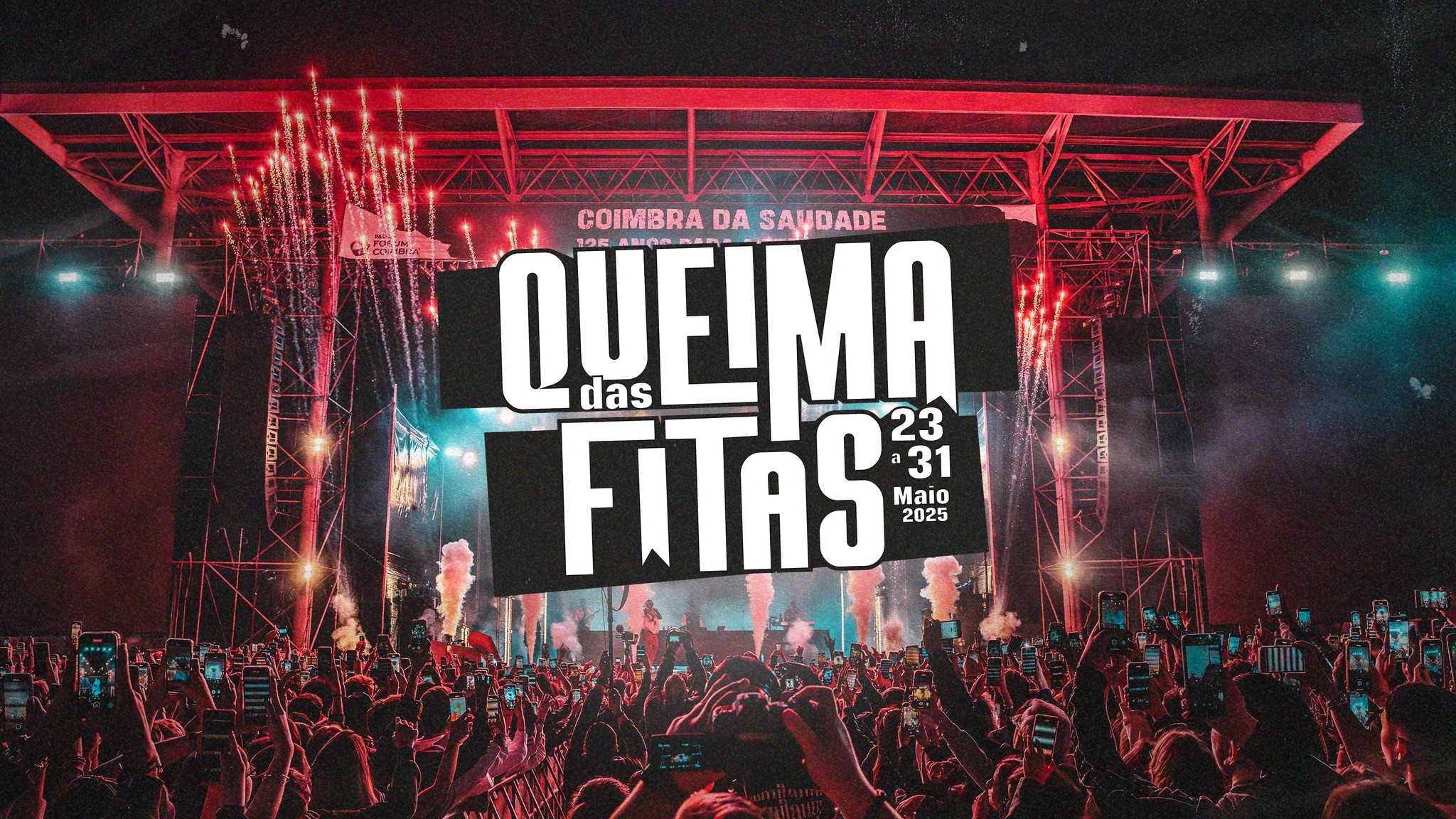
What: Queima das Fitas (Burning of the Ribbons) is Coimbra University’s historic student festival, dating back to 1888. It marks the end of the academic year with an explosion of youthful celebration. Events span an entire week: it begins with the “Serenata Monumental” (midnight fado serenade) under the Old Cathedral’s steps – a moving fado concert where graduating students in traditional capes sing Coimbra fado. Throughout the week, there are daily parades of decorated floats (each faculty has its float and unique colored ribbons), academic street dances, and concerts every night featuring popular Portuguese and international bands. The climax is the symbolic burning of the ribbons, which represent the students’ faculties – hence the festival’s name. By day, the city is alive with students in black capes and top hats hosting “barrasquinhas” (stalls serving food & drinks); by night, the party moves to a concert ground. Queima das Fitas is both a cultural tradition and huge party, offering visitors a taste of Coimbra’s academic soul and festive spirit.
Where: Tomar – 1st week of July (held quadrennially; last in 2023)
What: One of Portugal’s most spectacular traditional festivals, the Festa dos Tabuleiros is so special that it only happens every four years. It is a procession in honor of the Holy Spirit, with origins in the 17th century. During the main parade, hundreds of young women dressed in pure white carry towering “tabuleiros” on their heads – these are 2-meter tall stacks of bread loaves and flowers, topped with a Holy Spirit crown or dove. Each woman is escorted by a man and together they form a majestic cortege through Tomar’s streets. The city is adorned with millions of paper flowers and there’s a shower of flower petals as the procession passes. The festivity lasts a week, including folkloric games, street murals made of flowers, and the giving of bread and meat to the populace (a tradition of charity). The symbolism is deeply religious (celebrating the divine Holy Spirit and community sharing), but the visuals are breathtaking even for secular visitors. If you are lucky enough to be in Portugal during a Tabuleiros year, it’s absolutely worth planning a trip to Tomar – it’s a once-in-a-lifetime sight.
Where: Fátima (Santarém District) – May 12–13 and October 12–13 annually
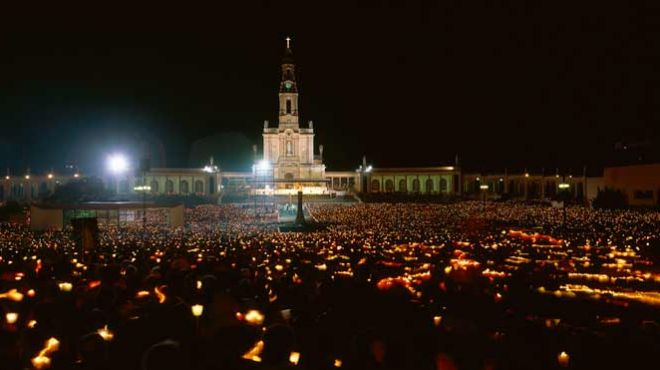
What: Fátima is one of the world’s major Catholic pilgrimage sites, and twice a year it hosts enormous pilgrimages commemorating the 1917 apparitions of the Virgin Mary. On May 13 and October 13 (the anniversary dates of the first and last apparitions), hundreds of thousands of pilgrims gather at the Sanctuary of Fátima. Many arrive after days of walking from all over Portugal. The two-day events include evening candlelight processions on the 12th (with the shrine’s vast plaza aglow with thousands of candles) and a solemn Mass on the morning of the 13th followed by the “Adeus” procession, where white handkerchiefs wave goodbye to the Virgin’s image. The atmosphere is profoundly moving – whether one is religious or not – as the crowd chants Ave Maria in unison. While not a “festival” in the partying sense, the Fátima pilgrimages are unmissable for their spiritual and cultural magnitude, demonstrating the enduring faith of the Portuguese people.
https://www.visitportugal.com/pt-pt/content/peregrinacoes-fatima
Where: Óbidos (Leiria District) – mid-July for ~2 weeks
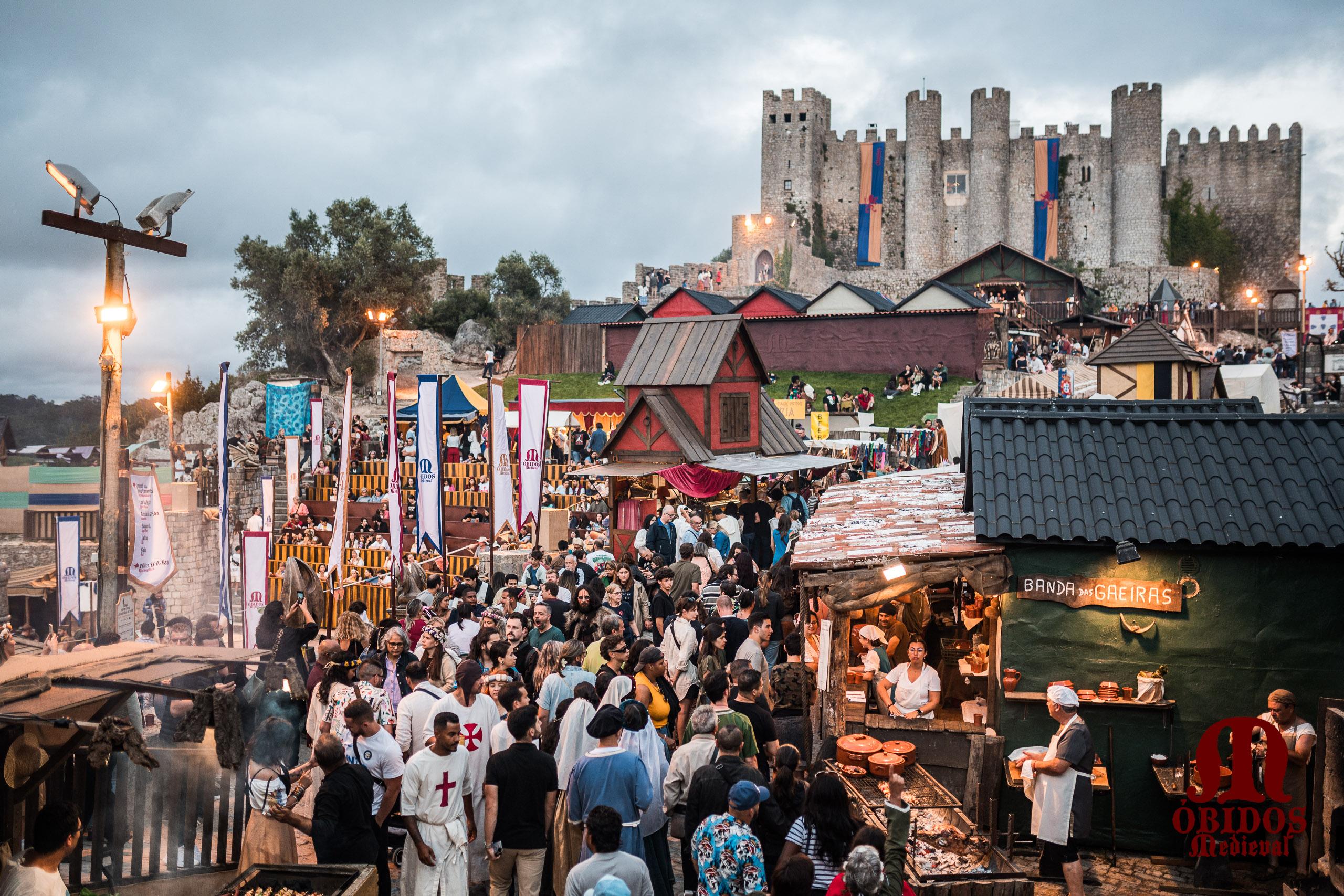
What: Travel back in time at the Óbidos Medieval Market, one of Europe’s most atmospheric medieval fairs. The entire walled town of Óbidos transforms into a scene from the Middle Ages. Hundreds of costumed actors and local volunteers roam the cobbled streets dressed as nobles, knights, monks, beggars, jesters and damsels. By day, minstrels and jugglers entertain visitors atop the castle walls; by night, the castle grounds host jousting tournaments on horseback, fire-breathing shows, and raucous medieval banquets by torchlightvisitportugal.com. Stalls line the streets selling medieval-style food (roasted meats, mead in clay cups) and crafts. Even visitors can rent costumes to join in the fun. For about two weeks, Óbidos truly “portrays noblemen, beggars, mule-drivers, jugglers, musicians, jesters and dancers” in an authentic setting. If you’re in Portugal in July, this fair is a must for history enthusiasts and families – a unique chance to experience daily life (and revelry) from centuries past, all in the stunning setting of Óbidos’ castle and churches.
Homepage 2025
Where: Óbidos – Usually March or April (dates vary)
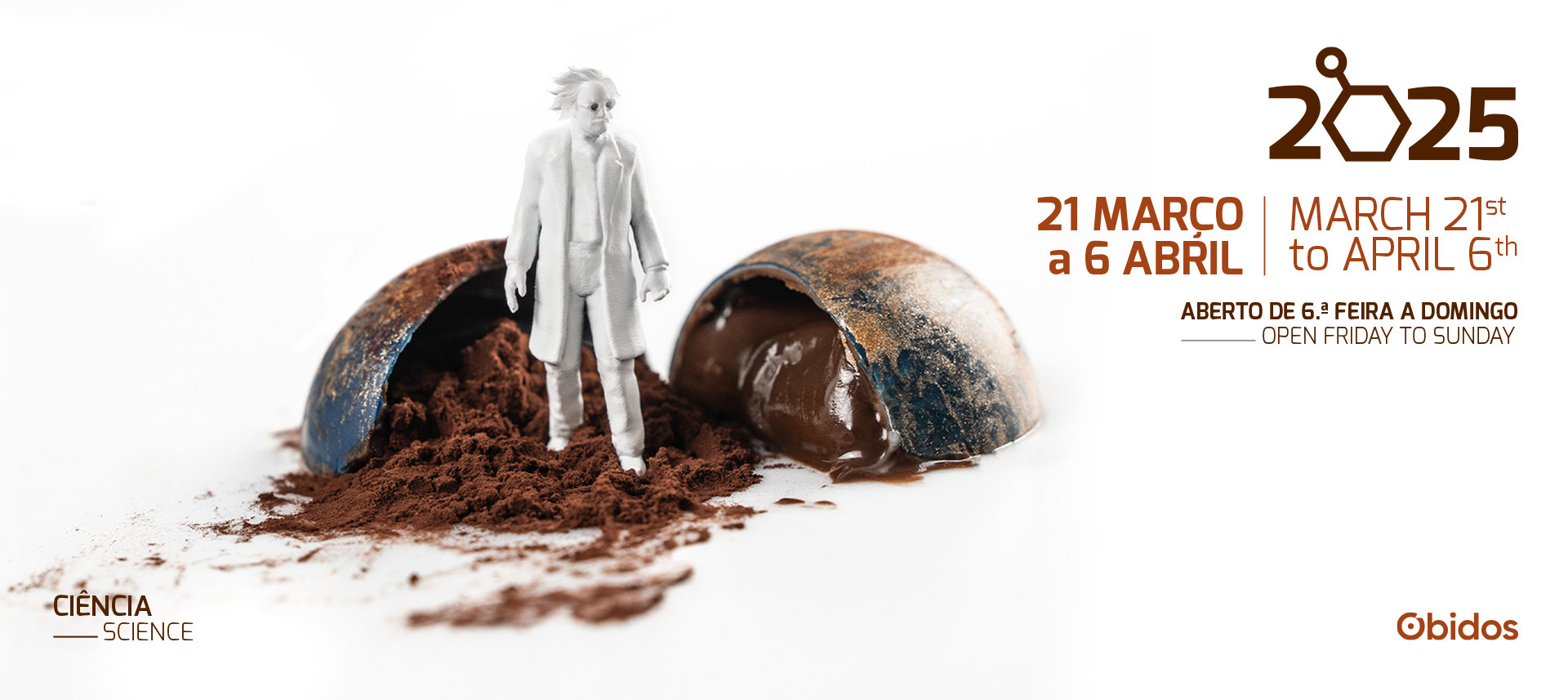
What: Yes, Óbidos again – this small town pulls out all the stops for its International Chocolate Festival each spring. For several weekends, the town becomes a chocolate lover’s paradise. There are massive chocolate sculptures on display (previous editions saw chocolate castles, animals, even chocolate replicas of monuments), professional pastry competitions, workshops, and stalls from top chocolatiers selling everything from truffles to hot chocolate in edible cups. Kids can join chocolate painting sessions, and adults compete in the “chocolate recipe contest”.
The festival typically draws pastry chefs from around the world, and the creativity is off the charts. Imagine walking medieval streets with the smell of cocoa in the air and encountering life-size chocolate artworks! It’s a newer tradition (started in 2002) but has become one of Portugal’s best-known food festivals. If you have a sweet tooth, align your visit with the chocolate festival for a truly indulgent cultural experience.
Homepage
(Central Portugal is also home to many local santos populares celebrations in June, lively summer beach festivals in Figueira da Foz and Nazaré, and the grand Feira de São Mateus in Viseu (a historic fair running since 1392 each August–September). The above selections highlight the region’s breadth – from sacred pilgrimages to student parties and foodie fairs.)
Lisbon and its surrounding area host some of Portugal’s biggest and most famous festivals, reflecting the capital’s love for celebration. Here you’ll find massive street parties for the popular saints, as well as internationally renowned music festivals and unique local traditions. Key festivals in Lisbon and Tagus Valley include:
Where: Lisbon – June 1–30 (main night: June 12)
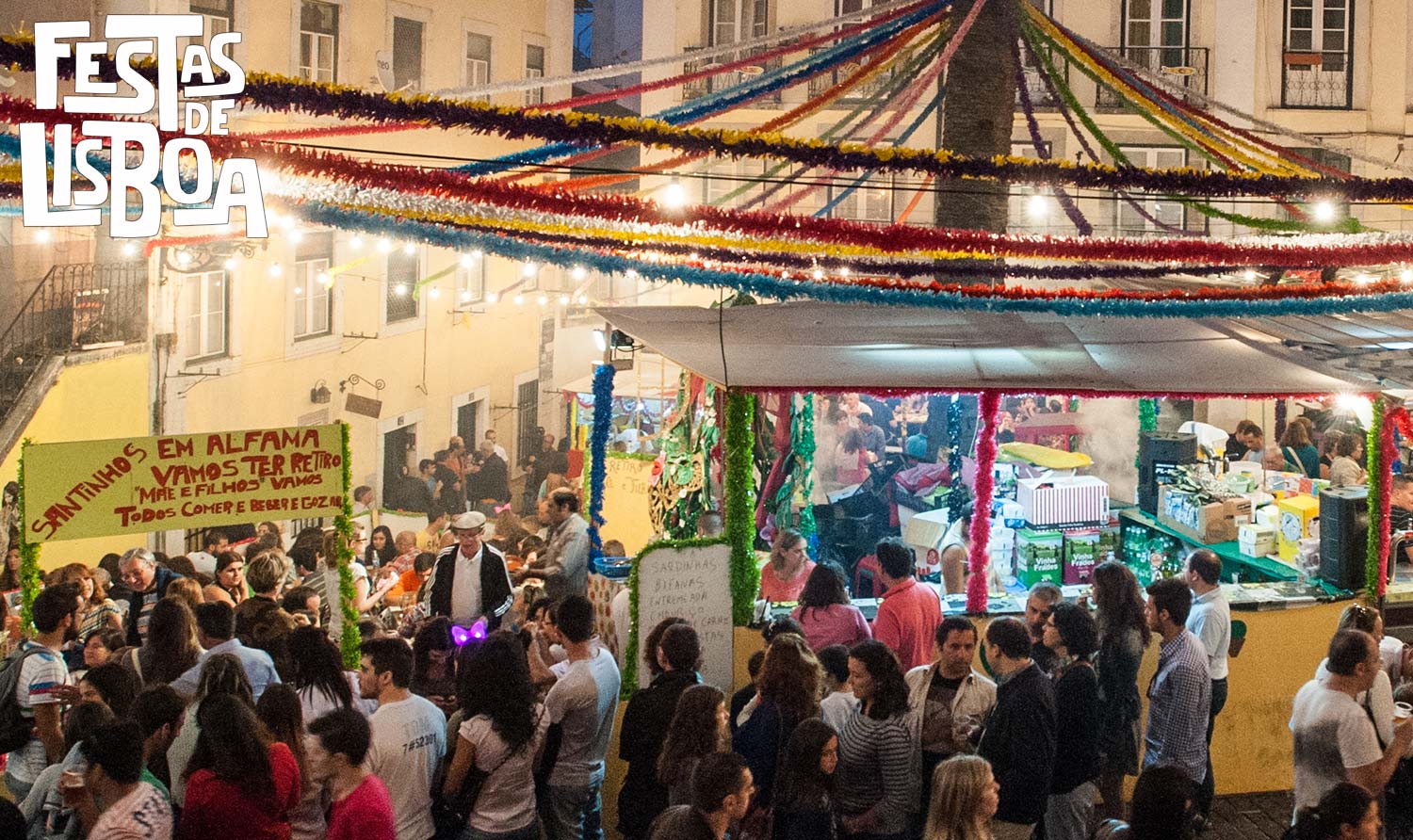
What: June in Lisbon means Festas de Lisboa, a month-long citywide celebration that honors the city’s patron saint, Santo António (Saint Anthony). The climax is on June 12th, when Lisbon throws its biggest street party of the year. In historic neighborhoods like Alfama, Graça, Bica, Mouraria, and Madragoa, narrow streets are strung with streamers and paper lanterns. Locals set up makeshift grills to serve sardinhas assadas (grilled sardines) and caldo verde soup, and every corner turns into an arraial – an open-air block party with music and dancing until dawn. A hallmark of the Lisbon festivities are the Marchas Populares on June 12: a parade down Avenida da Liberdade featuring teams from each neighborhood dressed in dazzling costumes, marching and dancing to folk songs in friendly competition.
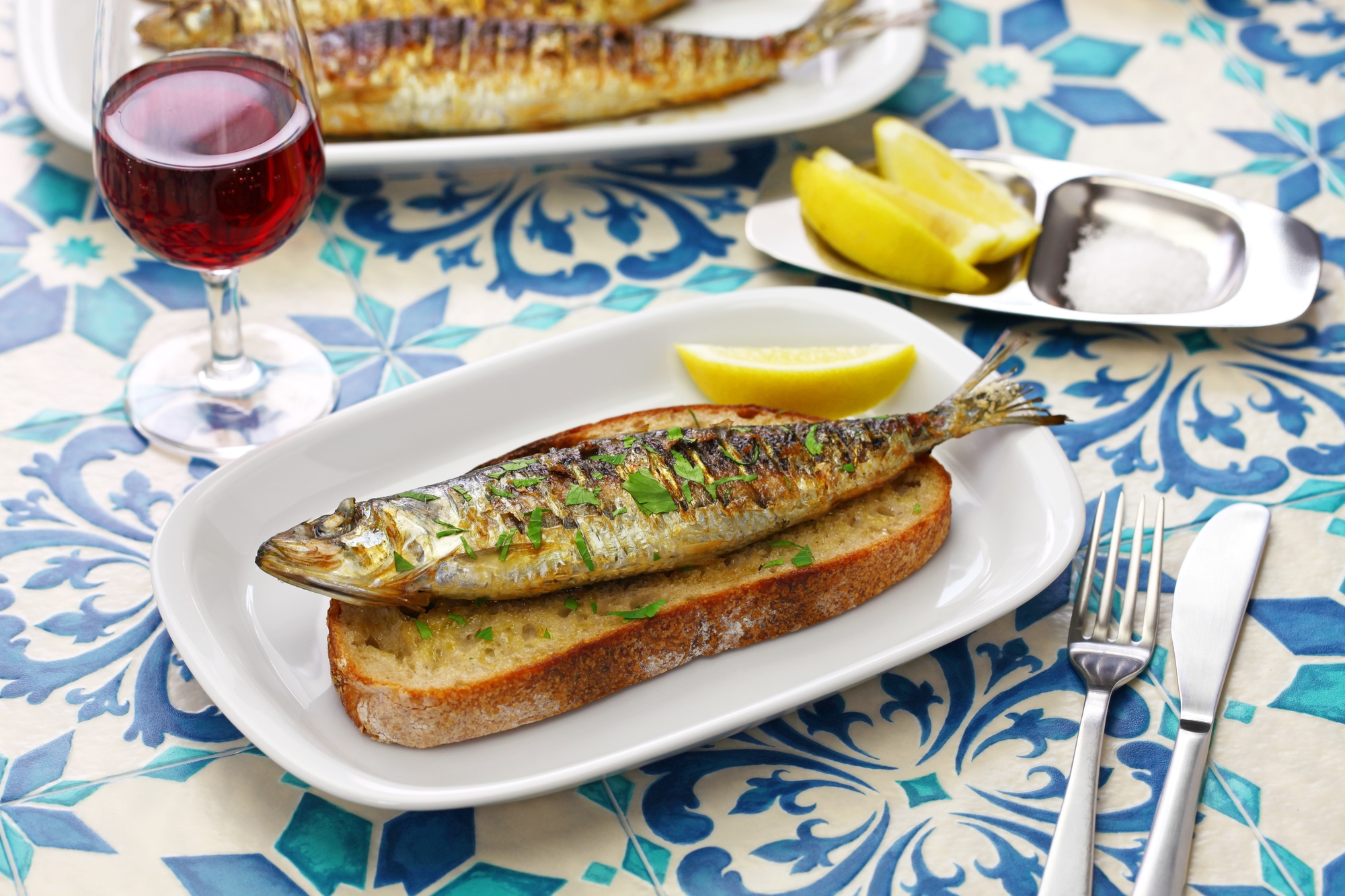
On June 13 (St. Anthony’s Day), a traditional highlight is the St. Anthony’s weddings, where multiple couples get married in a public ceremony (St. Anthony is the matchmaker saint). There’s also a solemn procession of Saint Anthony’s relic through Alfama. These festivities date back centuries and have a contagious energy – imagine entire streets singing pimba songs, waving basil plants with love poems, and the smell of charcoal-grilled sardines everywhere. It’s an immersive cultural experience that truly “takes over the city”. If you’re in Lisbon in June, join the merrymaking – grab a sardine and a cup of sangria and celebrate like a local!
Where: Vila Franca de Xira (Ribatejo, 30km north of Lisbon) – First Fri-Sun of July
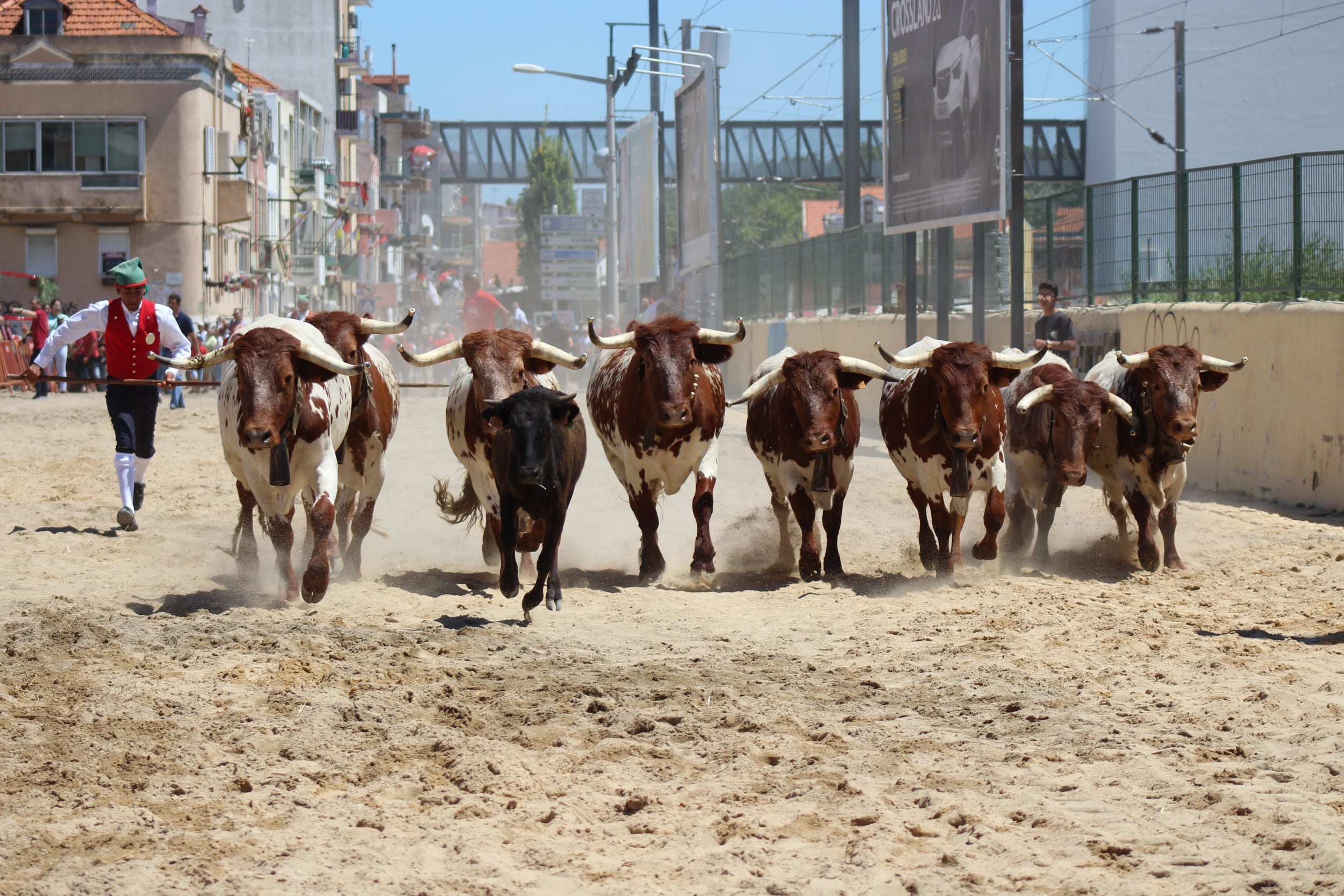
What: Colete Encarnado (the “Red Waistcoat” Festival) is a tribute to the Ribatejo cowboy (Campino) and the lezíria rural life along the Tagus. For three days, the city of Vila Franca honors its heritage with a lively mix of bull-running and folk celebration.
Each day, fearless campinos on horseback herd bulls through the streets in the esperas de toiros (running of the bulls) as crowds watch from balconies or scramble out of the way. There are also campino games like the “Corrida de Campinos” (a race showcasing their horsemanship).
Nights come alive with open-air dances (bailes populares) and live concerts in the main squares. One iconic moment is the Noite da Sardinha Assada – a giant communal barbecue where sardines are grilled and given out for free, paired with red wine, as people mingle in the streets. Throughout the festival, the town also hosts tertúlias (social clubs) open to visitors, and ceremonies honoring notable campinos (including a parade of campinos in traditional attire with red waistcoats).
Colete Encarnado has run since 1932, preserving the proud ranching traditions of the region facebook.com. It’s a unique blend of fiesta and folklore – think Pamplona meets Portuguese village fair. If you want to see the bulls run and experience Ribatejo culture at its best, head to Vila Franca in early July.
Where: Lisbon (Parque da Bela Vista) – Mid June (every 2 years)
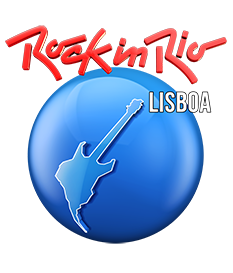
What: One of Europe’s largest music festivals, Rock in Rio Lisboa is the Lisbon edition of the famous Brazilian festival. It’s typically held every two years (e.g., 2024, 2026) over two weekends in June, bringing superstar artists across rock, pop, and EDM. The festival boasts multiple stages (Palco Mundo main stage, electronic stage, etc.), amusement rides, and a mini-city of attractions for about 70,000–80,000 attendees each day.
In 2024, for example, headliners included names like Ed Sheeran, Camila Cabello, Black Eyed Peas, Post Malone and Duran Duran, spread over four days. Rock in Rio stands out not just for its lineup but for its scale and production quality – expect elaborate stage designs, fireworks, and all-day entertainment. It’s been running in Lisbon since 2004 and celebrated its 10th edition in 2024. For music fans, it’s a bucket-list event. (Keep in mind tickets often sell out – daily passes cost around €84 expresso.pt – but the experience of seeing global superstars in Lisbon’s sunshine is unforgettable.)
Where: Algés (Oeiras, Lisbon metro) – Early to mid-July (3 days)
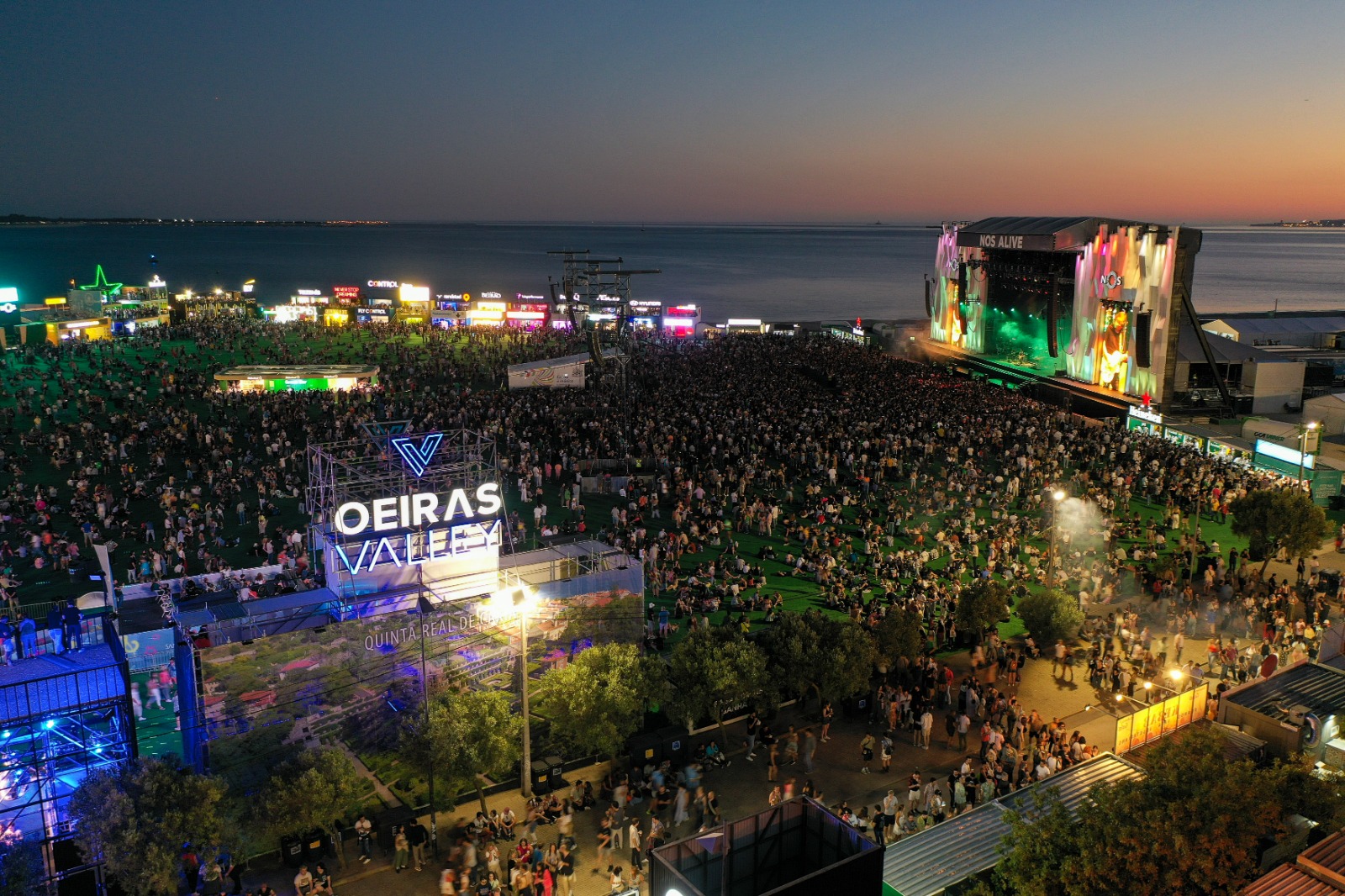
What: NOS Alive has earned a reputation as one of Europe’s top summer festivals, known for its consistently stellar lineups and seaside location. This three-day music festival takes place at the Passeio Marítimo de Algés, right on the Tagus River waterfront (with easy access by train or bus from central Lisbon). NOS Alive’s lineup leans towards indie, rock, and alternative pop – recent editions featured bands and artists like Arctic Monkeys, Foo Fighters, The Weeknd, Metallica, Imagine Dragons, and Lizzo.
The festival has multiple stages (including a main stage and a secondary stage often showcasing Portuguese talent).
Crowds are massive – in 2022 the festival drew an average of 85,000 people per day, including ~25,000 foreign attendees from 98 countries. It’s testament to how Alive has “attracted an international audience with its quality and variety” visao.pt.
The atmosphere is electric but friendly, with festival-goers hopping between stages or grabbing a craft beer in the food court between sets. If you love music, NOS Alive is a must – just be ready for high-energy crowds and non-stop music from late afternoon until the early hours. (Ticket tip: ~€79 for a 1-day or €190 for a 3-day pass.)
NOS Alive
Where: Lisbon or Meco (Sesimbra) – Mid July

What: Super Bock Super Rock (SBSR) is a long-running festival (since 1995) that, as the name suggests, started with a focus on rock but has expanded to include electronic, hip-hop, and pop. It has an urban vibe when held in Lisbon’s Parque das Nações (with indoor stages in the Altice Arena) and a beachy vibe when held outdoors in Meco (Sesimbra) – the location has alternated in recent years. Past headliners include Red Hot Chili Peppers, Disclosure, Travis Scott, Lana Del Rey, and Phoenix.
SBSR is typically a 2-3 day event sponsored by Super Bock beer, meaning the beer flows freely. Crowds are a bit smaller than NOS Alive, but the festival is beloved for its edgy lineups and more intimate feel. If you’re into a mix of mainstream and cutting-edge music, and perhaps want to combine festival days with beach days (in Meco’s case), SBSR is a great pick. (Ticket prices are similar to Alive, around €60–€70/day or €110+ for full pass.)
Where: Sines and Porto Covo (Alentejo Coast) – Late July
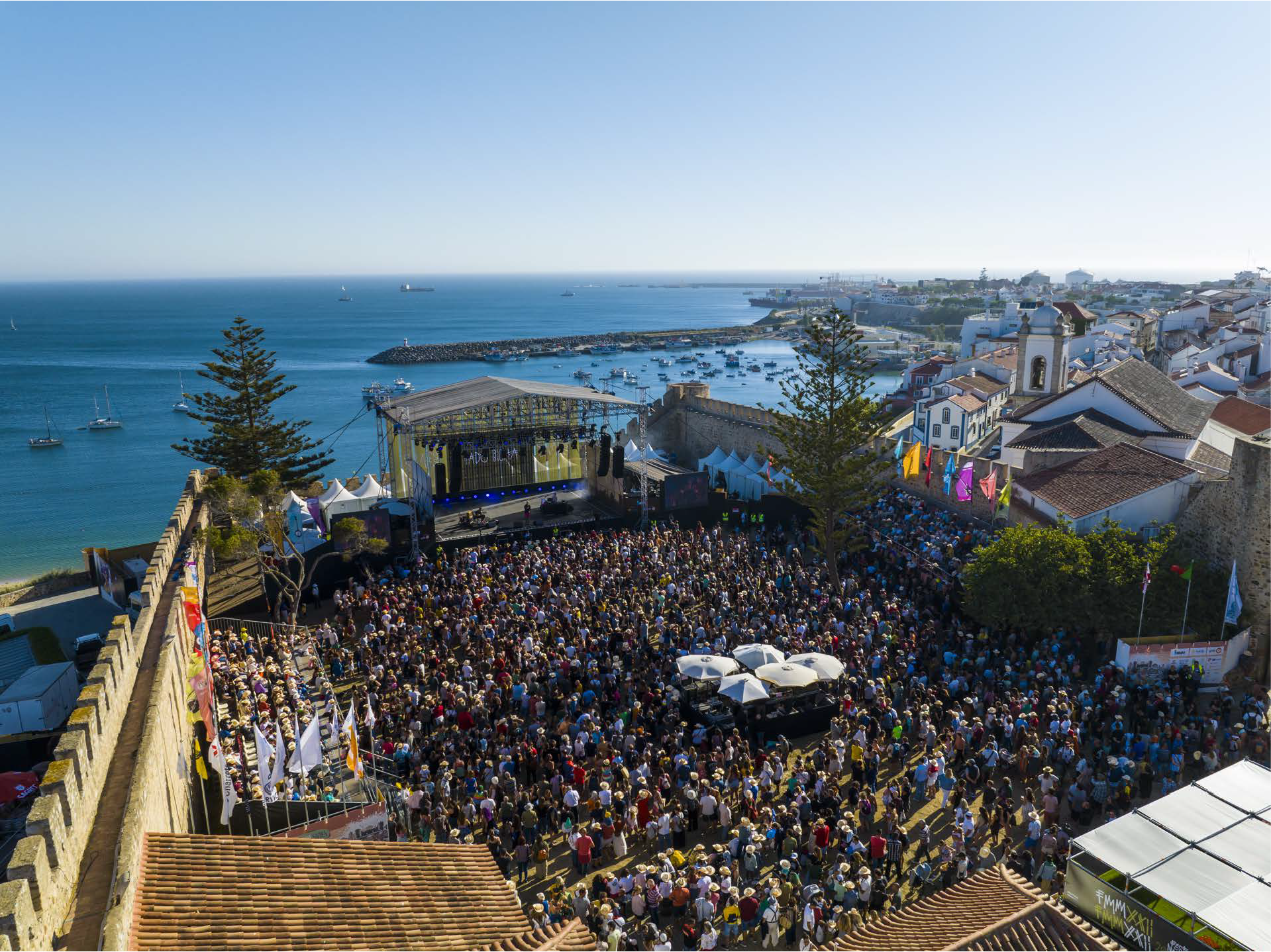
What: A gem among festivals, FMM Sines is a world music festival that brings sounds from across the globe to the historic coastal town of Sines. Concerts take place in magical venues – including the courtyard of Sines Castle (birthplace of explorer Vasco da Gama) and on a stage by the beach in the fishing village of Porto Covo. Over about 10 days, you can hear everything from African desert blues to Balkan brass, Asian percussion ensembles, Latin American fusion, and Portuguese folk. Past editions have featured artists from dozens of countries (e.g., Tinariwen from Mali, Goran Bregović, Cesária Évora from Cape Verde, etc.).
What makes FMM special is its inclusive, laid-back vibe: many concerts are free, and the paid ones are very affordable, drawing a mix of locals, Lisbon weekenders, and backpacking music lovers. The atmosphere on the castle hill on a warm July night – listening to, say, an Indian sarod performance under the stars – is simply unforgettable. If your tastes are eclectic and you want a festival off the beaten path (with the bonus of beautiful Atlantic beaches nearby), head to FMM Sines.
(Lisbon and its surrounds have many more events: Lisbon Pride March in June, Lisbon & Sintra Film Festival in November, Lisboa Carnaval (with parades in Loures and Sesimbra), and MEO Kalorama (a new music festival in early September). But the above are standout highlights. Notably, Lisbon is becoming a festival hub – in 2025 it will even host an electronic music extravaganza and the MTV Europe Music Awards. The festival scene here is always evolving!)
Alentejo, known for its rolling plains and historic towns, celebrates tradition and music in equal measure. Summer festivals here often combine contemporary music with local culture (wine, food, crafts). Key Alentejo festivals include:
Where: Herdade da Casa Branca, Zambujeira do Mar (Alentejo coast) – Usually first week of August
What: MEO Sudoeste is Portugal’s biggest summer beach party/festival, a five-day extravaganza that has been running since 1997.
It was a game-changer for Portuguese festivals – “there’s a before and after Sudoeste’s first edition,” as it set the template for multi-day camping festivals.
Located near the beautiful beaches of Zambujeira do Mar, it attracts tens of thousands of mostly young festival-goers who camp on-site for the week.
The lineup is very youth-oriented: expect international pop, EDM, reggae, and hip-hop acts (past headliners include Post Malone, Hardwell, Wiz Khalifa, Anitta, and Maluma) along with top Portuguese artists.
By day, many attendees relax at nearby beaches; by evening, the festival comes alive with multiple stages pumping music until dawn. Part of Sudoeste’s allure is the freedom and “festival mythos” it created – for many Portuguese teens, Sudoeste is a rite of passage, synonymous with summer freedom.
Aside from music, there’s a strong communal vibe: think foam parties, spontaneous football matches at camp, and making new friends around a grill. If you’re looking for a full festival vacation by the sea, Sudoeste is the one. (Note: it can be chaotic and loud – not for those seeking a quiet time! Also, tickets: around €69 for a day, €130–€160 for the full pass, with camping included.)
Where: Crato (Portalegre District) – Last week of August
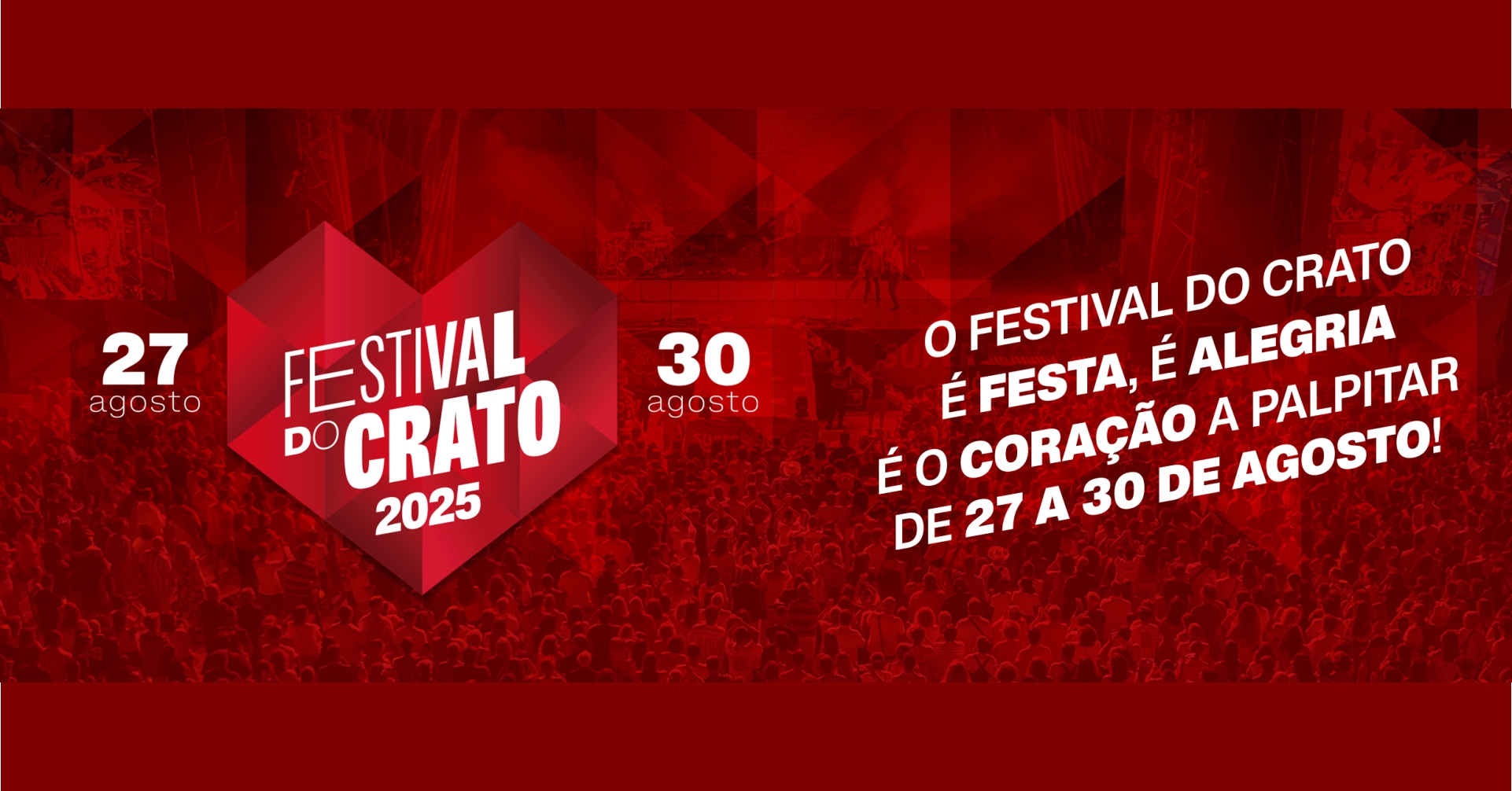
What: Part music festival, part traditional fair, Festival do Crato offers a more relaxed, culturally rich festival experience. Held in the small historical town of Crato, it evolved from a local craft & gastronomy fair in 1984 to a popular music festival today.
By day, you can wander the Feira de Artesanato e Gastronomia – an open-air market showcasing artisans from all over Portugal and plenty of regional food (cheeses, sausages, wines). By night, big-name concerts take the stage: the lineup typically blends Portuguese pop/rock (e.g., Xutos & Pontapés, Mariza) and international acts (from Seu Jorge to Scorpions).
What sets Crato apart is its intimate, friendly vibe – the whole town gets involved, and audiences are a mix of local families and festival travelers. You can enjoy a craft beer and local plum cake while watching a show in a medieval convent’s shadow. It’s been called “a singular reference among summer festivals” for how it merges good music, good food, and traditional arts.
If giant crowds aren’t your thing, Crato’s more low-key atmosphere (attendance is in the thousands, not tens of thousands) and the chance to experience Alentejo’s hospitality make it very appealing. Plus, you’ll learn about Portuguese crafts and cuisine as a bonus!
Festival do Crato 2025
Where: Palmela (Setúbal District) – Early September
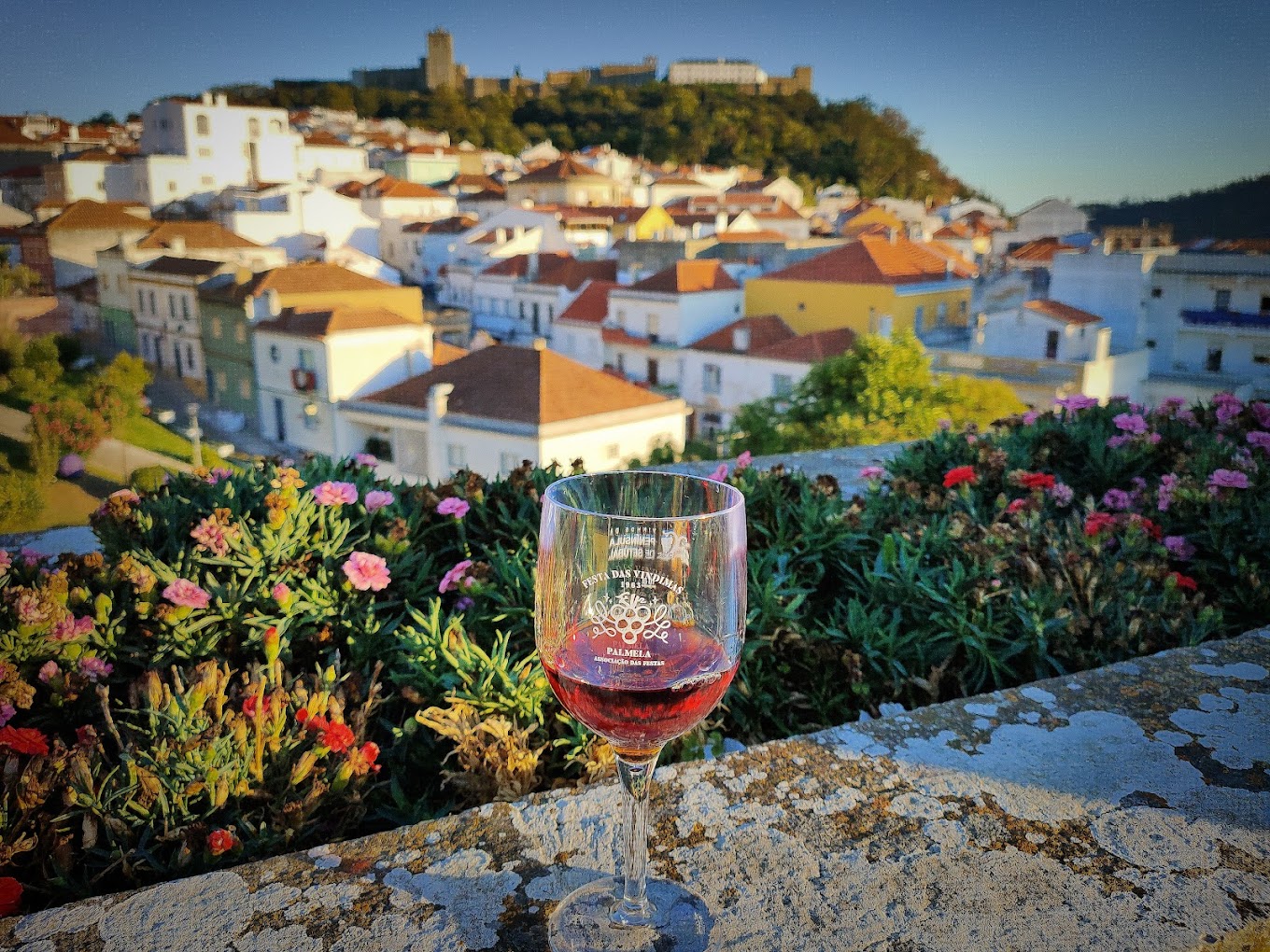
What: Celebrating the grape harvest in one of Portugal’s prime wine regions, the Palmela Vindimas festival is a must for wine enthusiasts and culture lovers. Palmela (a town crowned by a castle and surrounded by vineyards) throws a five-day festa when the grapes are ripe. The agenda: a blessing of the harvest ceremony, a colorful parade of floats decorated with vines and wine motifs, the election of a Harvest Queen, traditional folk dancing, and of course ample wine tasting.
One quirky highlight is the grape stomping competition where teams race to press grapes with their feet in old-style barrels – purple mess and laughter guaranteed. Evenings feature concerts and fireworks above the castle.
All local wineries set up booths, so you can sample award-winning Muscatel de Setúbal and other regional wines for a few euros a glass. It’s a joyful way to experience Portuguese wine culture at the source. The whole town smells of fermenting grapes and roast chouriço during this time! As the Alentejo days are still warm and long, the Vindimas festival is both a celebration of the year’s harvest and a fun farewell to summer.
(Alentejo also boasts many local saints’ festivals (like Évora’s Feira de São João in June) and folklore events. In early September, Festa do Avante! – a large cultural festival organized by Portugal’s Communist Party – takes place just outside Lisbon (in Seixal), featuring music, food, and political debates in a very unique mix. Though not in Alentejo proper, it’s a notable mention in the region’s vicinity for its huge crowds and diverse program. Additionally, towns like Reguengos and Borba have wine festivals, and coastal Sines hosts the big FMM world music fest detailed earlier. Alentejo’s festivals often combine heritage, gastronomy, and music, offering a true taste of its slow-paced but soulful life.)
The Algarve, Portugal’s sunny south, is famous for its beaches – and its festivals make the most of the summer tourist season. Expect open-air events that showcase local seafood, medieval history, and plenty of music under the stars. Don’t miss these Algarve highlights:
Where: Loulé – Carnival weekend (Feb or early March)
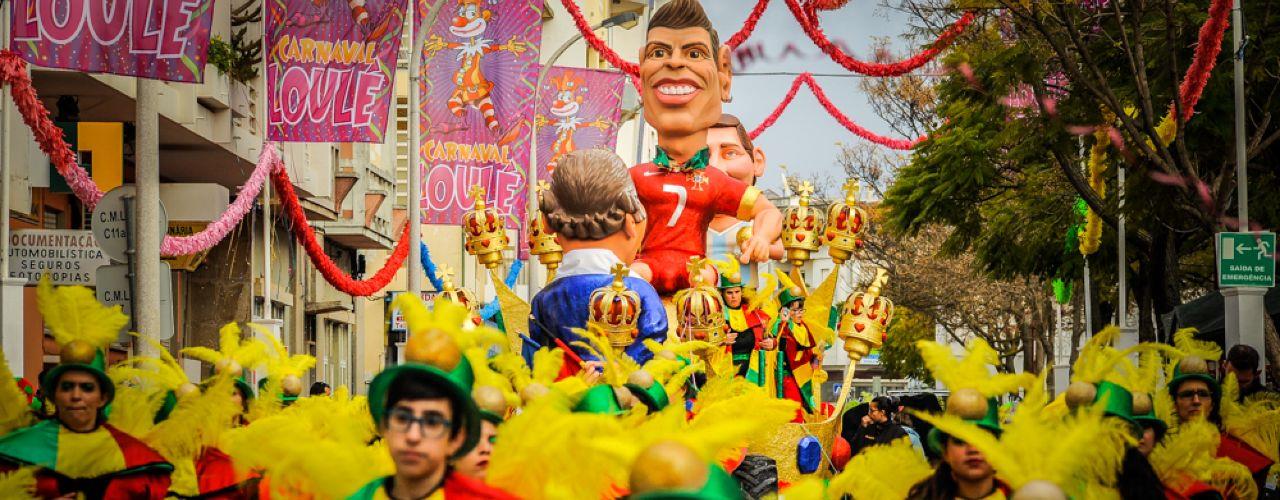
What: The Algarve’s biggest Carnival parade happens in Loulé, a town that’s been celebrating Entrudo for over a century. Loulé’s carnival has a more Brazilian-style flair compared to Torres Vedras: brightly decorated floats with samba dancers, extravagant costumes, and themed parades that often satirize politics or world events (in 2023, for example, floats poked fun at politicians and celebrities). Giant cartoonish figures bob along the route, and samba groups bring infectious rhythms. It’s a family-friendly carnival by day – kids (and adults) often dress up in fun costumes to watch the parade – and by night it turns into street parties with live music in the town’s squares.
Loulé Carnival prides itself on being Portugal’s oldest continual carnival (since the early 1900s) and it’s affectionately dubbed “Carnaval mais brasileiro de Portugal” for its tropical vibe. If you’re in the Algarve in Carnival season, join the roughly 100,000 spectators for a sun-kissed parade full of humor, music, and glitter.
Where: Loulé – Late June (usually 4 days)
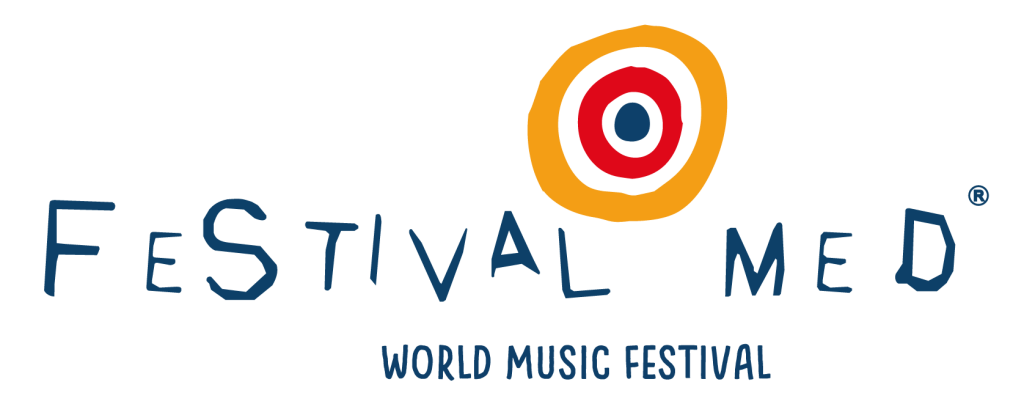
What: Another Loulé event, but very different: Festival MED is a renowned world music and arts festival set in Loulé’s historic center. For a few nights, the medina-like old quarter (cobbled streets, Arab-style archways) turns into a global village.
Multiple stages host bands from across the Mediterranean and beyond – think African kora players, Brazilian forró, Balkan gypsy brass, Middle Eastern oud ensembles, Portuguese fusion bands, etc. The vibe is chill and bohemian.
Besides music, there are street theater performances, art installations, and global gastronomy stalls (you can nibble on Moroccan tagine or Spanish tapas while strolling between shows). Festival MED has won awards as one of the best world music festivals in Europe for its lineup and ambiance. It’s also very affordable – tickets are around €10–€12 per night postal.pt – reflecting the festival’s community spirit. Wandering Loulé’s illuminated alleys, discovering new music under the warm Algarve sky, is a magical experience for any culture-loving traveler.
Where: Silves – Usually 10 days in August
What: The Algarve’s medieval extravaganza takes place in Silves, the ancient Moorish capital of the region. Each August, Silves Medieval Fair transports the town back to the 12th century. Under the red sandstone walls of Silves Castle, you’ll find a bustling medieval souk: merchants selling armor, leather goods and spices; taverns serving spit-roasted hog and mead in clay cups; and continuous entertainment from fire-jugglers, belly dancers, and troubadours.
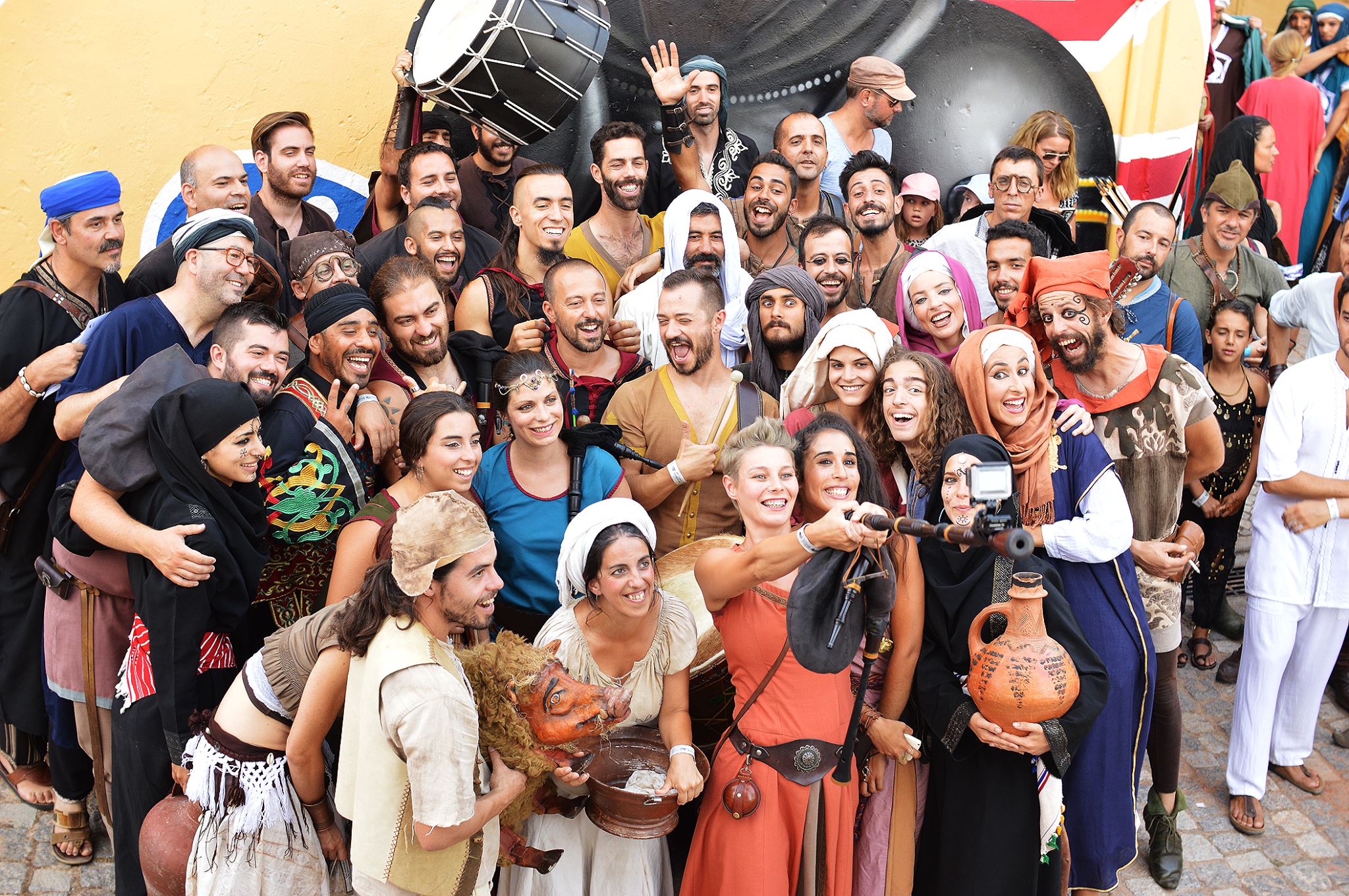
Costumed knights on horseback joust in daily tournaments, greeted by cheers from crowds lining the lists. Townspeople and many visitors dress up in period costumes (you can rent outfits at the fair) which adds to the immersion. In the evenings, a grand banquet is held in the castle, and the streets fill with the sounds of drums and bagpipes.
The fair highlights Silves’ Moorish and Christian heritage, often reenacting historical events like siege battles. As you wander torch-lit lanes at night with the scent of incense and roasted almonds in the air, you truly feel a part of the Middle Ages. If you’re in the Algarve in August, Silves’ fair is a journey through time that’s as entertaining as it is educational.
Where: Olhão – Mid-August (5-6 days)
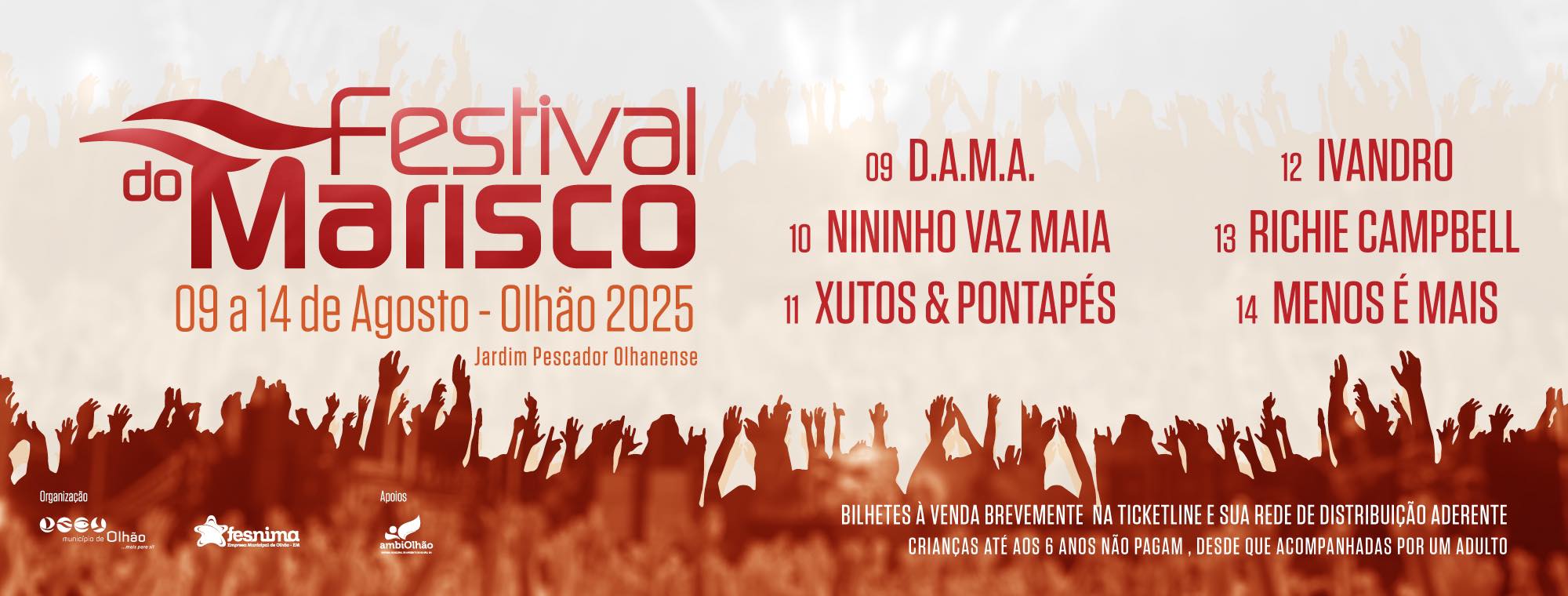
What: Seafood lovers, rejoice! The Olhão Seafood Festival is a gastronomic highlight of the Algarve summer. Hosted in the fishing town of Olhão (near Faro), this festival showcases the bounty of the Ria Formosa lagoon and Atlantic. Dozens of stalls serve fresh seafood dishes: grilled tiger prawns, lobster and crab, clams à Bulhão Pato, oysters shucked on the spot, octopus salad, cuttlefish stew – you name it.
You buy a plate and sit at long communal tables under the stars, savoring the flavors of the sea. It’s not just about eating, though: every night the festival features popular Portuguese music concerts, from fado to pop, turning it into a party.
Families stroll the festival grounds, kids get their faces painted with fish motifs, and there’s a general atmosphere of summer merriment.
The festival usually attracts tens of thousands over its run (Olhão is known as the Algarve’s seafood capital, and this is why).
Prices are reasonable for the quality and variety of seafood on offer. If you want to taste authentic Algarve coastal cuisine in a fun, festive setting, plan to stop by Olhão in mid-August – come hungry and ready to try everything from conquilhas (tiny clams) to percebes (goose barnacles)!
Where: Faro – Early September
What: As summer winds down, Festival F marks the Algarve’s closing summer festival in Faro’s charming old town. This multi-stage music festival is dedicated almost exclusively to Portuguese music, celebrating both established artists and up-and-coming talent across genres. Stages are tucked in cool venues like the terraces of the historic city walls, plazas by churches, and even inside museums.
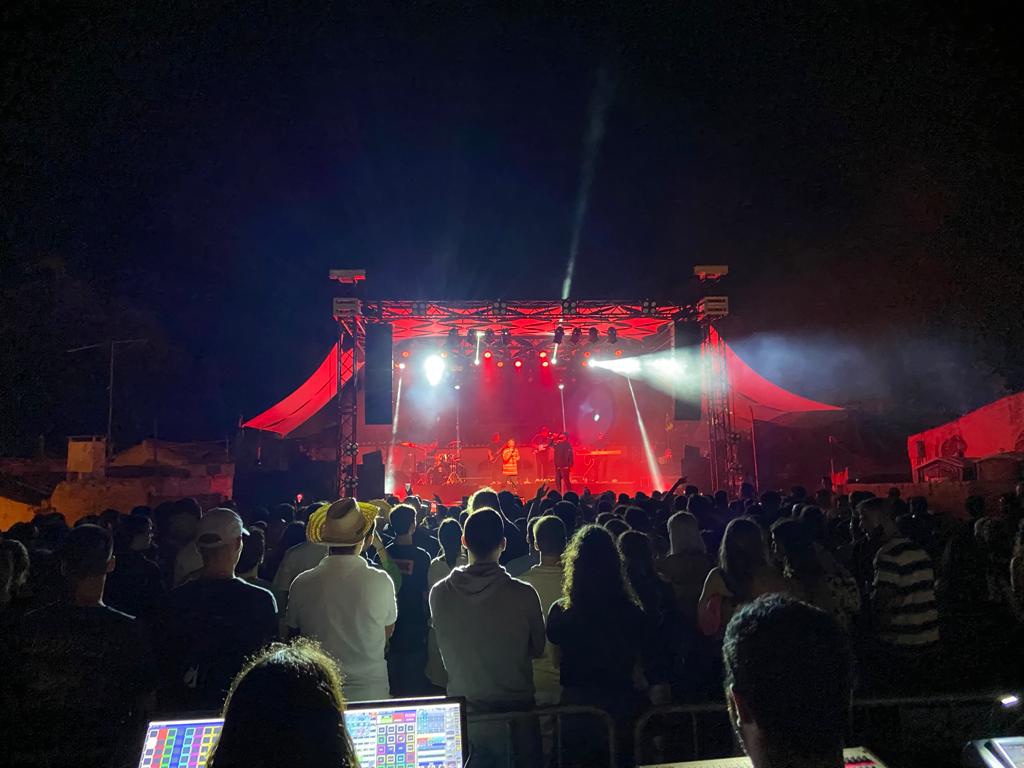
Over three nights, attendees can hop between fado performances, indie rock gigs, hip-hop shows, and DJ sets – all within a walkable heritage setting. Big names like Mariza (fado), Rui Veloso (rock), or Dino D’Santiago (Lusophone Afro-electro) have performed, alongside alternative bands and DJs. The “F” stands for Faro, Família (Family) and Festa (Party) – indeed the festival is very friendly, attracting local families and youth alike, and there’s art exhibits, stand-up comedy, and street food adding to the mix.
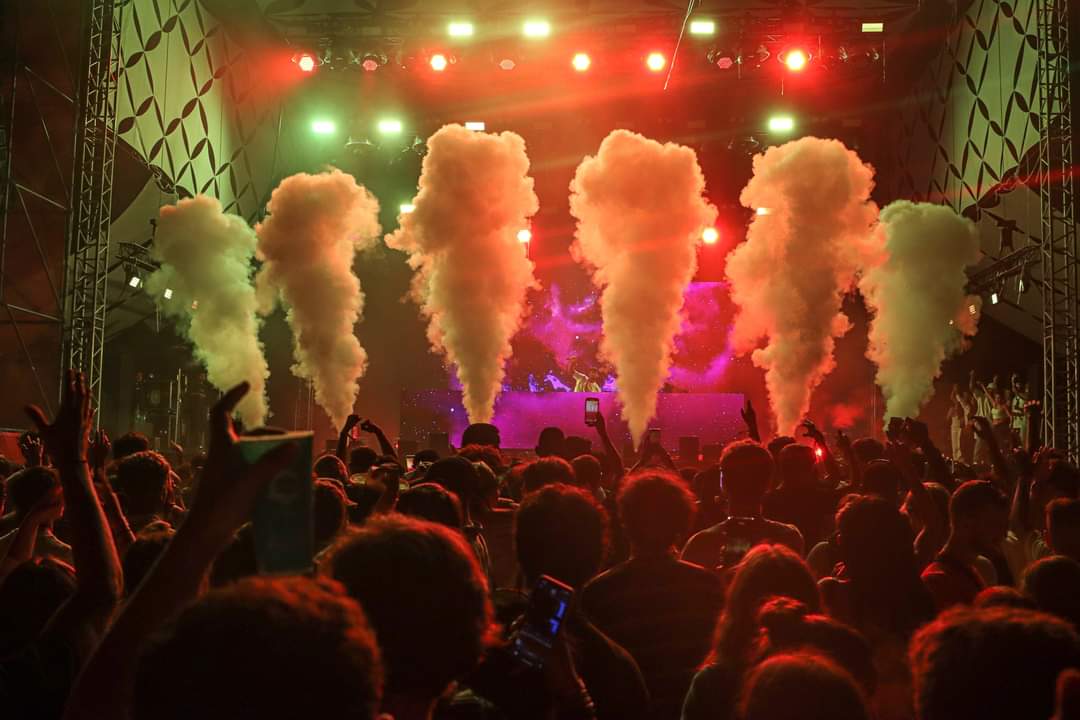
It’s like a city-wide cultural fiesta where you can discover the richness of contemporary Portuguese music on a relaxed September evening. As a bonus, Faro’s bars and restaurants stay open late, so the whole downtown buzzes with life even after the official concerts end. Festival F offers an ideal ending to the Algarve summer – culture-packed but laid-back, under the warm night sky.
https://www.festivalf.pt/pt/Default.aspx
(The Algarve also offers smaller local festivals: almost every town has a sardine festival or folklore dance festival in summer. For instance, Portimão’s Festival da Sardinha (early August) celebrates the grilled sardine with plenty of music and beer, and there’s a charming Lavender Festival in Alto Alentejo’s Castelo de Vide. Additionally, New Year’s Eve in Algarve resorts feature big concerts and fireworks. But the events above stand out for their scale and uniqueness in the region.)
Despite its small size, the island of Madeira hosts some of Portugal’s most spectacular and colorful festivals, taking full advantage of its dramatic landscapes and rich cultural traditions. From floral pageantry to dazzling fireworks, Madeira’s festivals should be on every traveler’s radar:
Where: Funchal – Carnival week (Feb or early March)
What: Madeira takes Carnival seriously – it’s second only to Rio in spectacle (not surprisingly, many samba schools from Rio participate). Carnival in Funchal features two main parades: the Allegoric Parade on Carnival Saturday, and the “Trapalhão” Fun Parade on Carnival Tuesday.
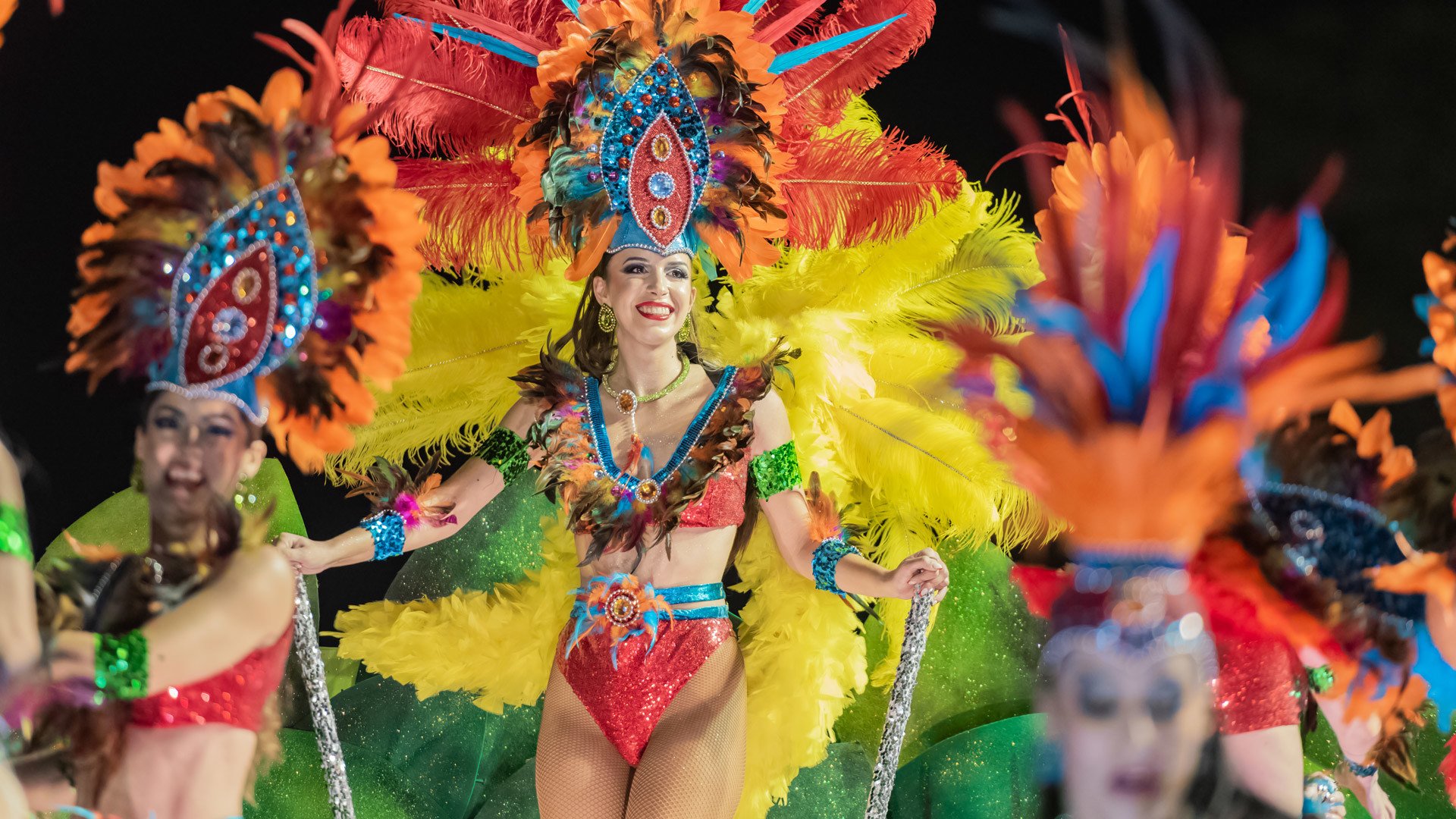
The Allegoric Parade is a lavish nighttime procession of samba groups in glittering costumes, floats with themed decorations, and rhythmic bands dancing through Funchal’s streets. Thousands line the route to cheer and catch beads or confetti. On Carnival Tuesday, the “Trapalhão” is a comical parade open to anyone – locals dress in goofy, often satirical costumes (think politicians, pop culture figures) and join a hilarious march where anything goes.
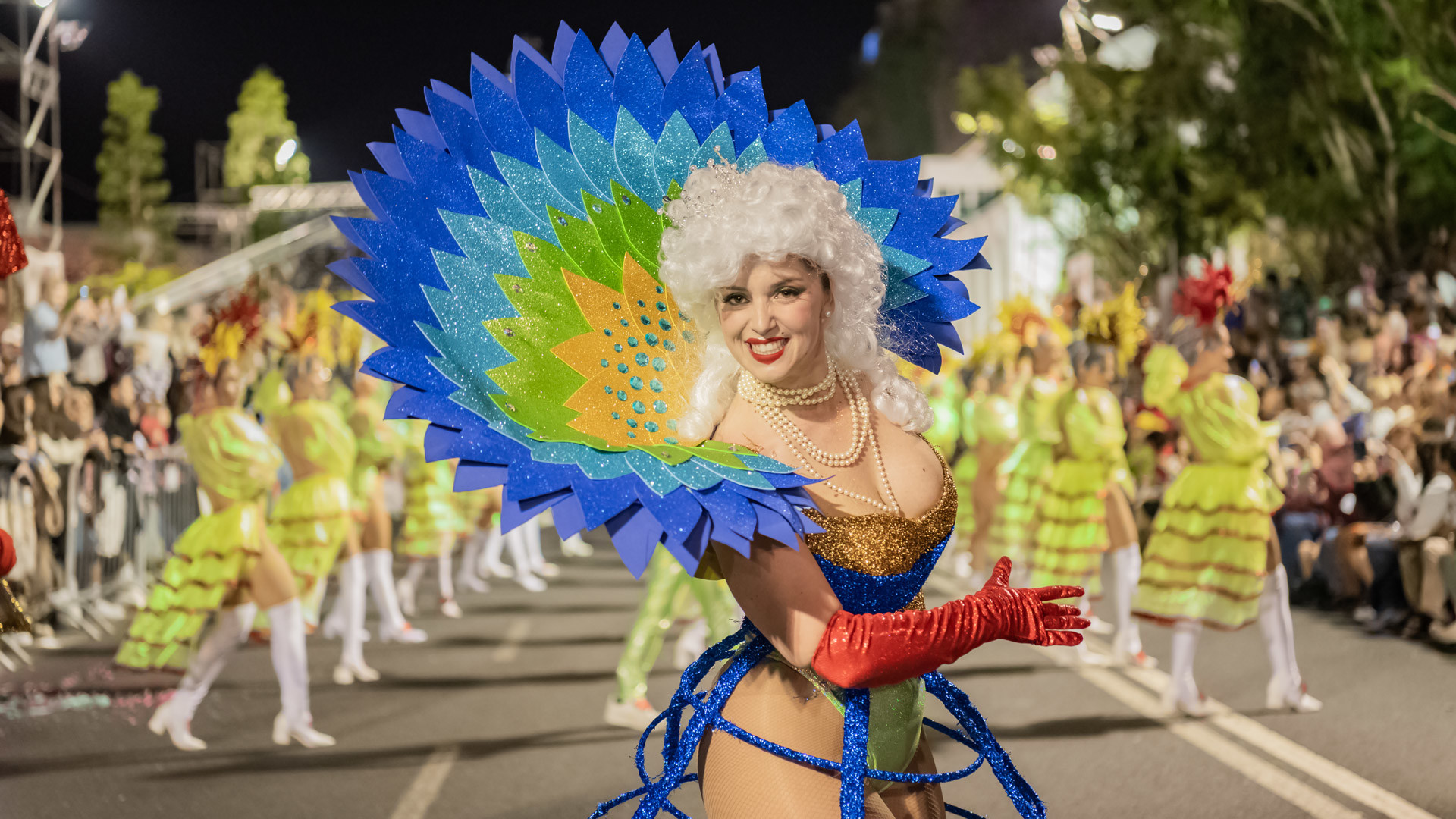
Throughout the week, the island has events like Carnival balls, costume contests, and street parties. The whole of Funchal is festooned with lights and decorations. Being a part of Madeira’s Carnival is experiencing a unique blend of Brazilian-style glamour and local humor – all set against Funchal’s beautiful bay. Don’t be shy to dress up and join the fun! (Tip: The day after Carnival, called Ash Wednesday, locals eat the traditional dish “espécies” – a spicy meat snack – to recover from the revelry.)
Intricate floral floats at Madeira’s Flower Festival (Festa da Flor).
Where: Funchal – Spring (typically two weeks after Easter)
What: Arguably Madeira’s most famous festival, the Flower Festival welcomes spring in an explosion of color and scent. For about a week, Funchal becomes a floral wonderland: magnificent carpets of fresh flowers adorn the streets, shop windows display elaborate flower arrangements, and music and floral themes fill the air.

The highlight is the Grand Floral Parade (usually on Sunday) where dozens of floats, entirely covered in flowers, roll through the city. Each float is a masterpiece – one might be a ship made of hydrangeas and birds-of-paradise, another a giant butterfly of orchids. Marching alongside are hundreds of dancers (women, men, and children) dressed in imaginative flower-themed costumes, performing samba and folk dances.
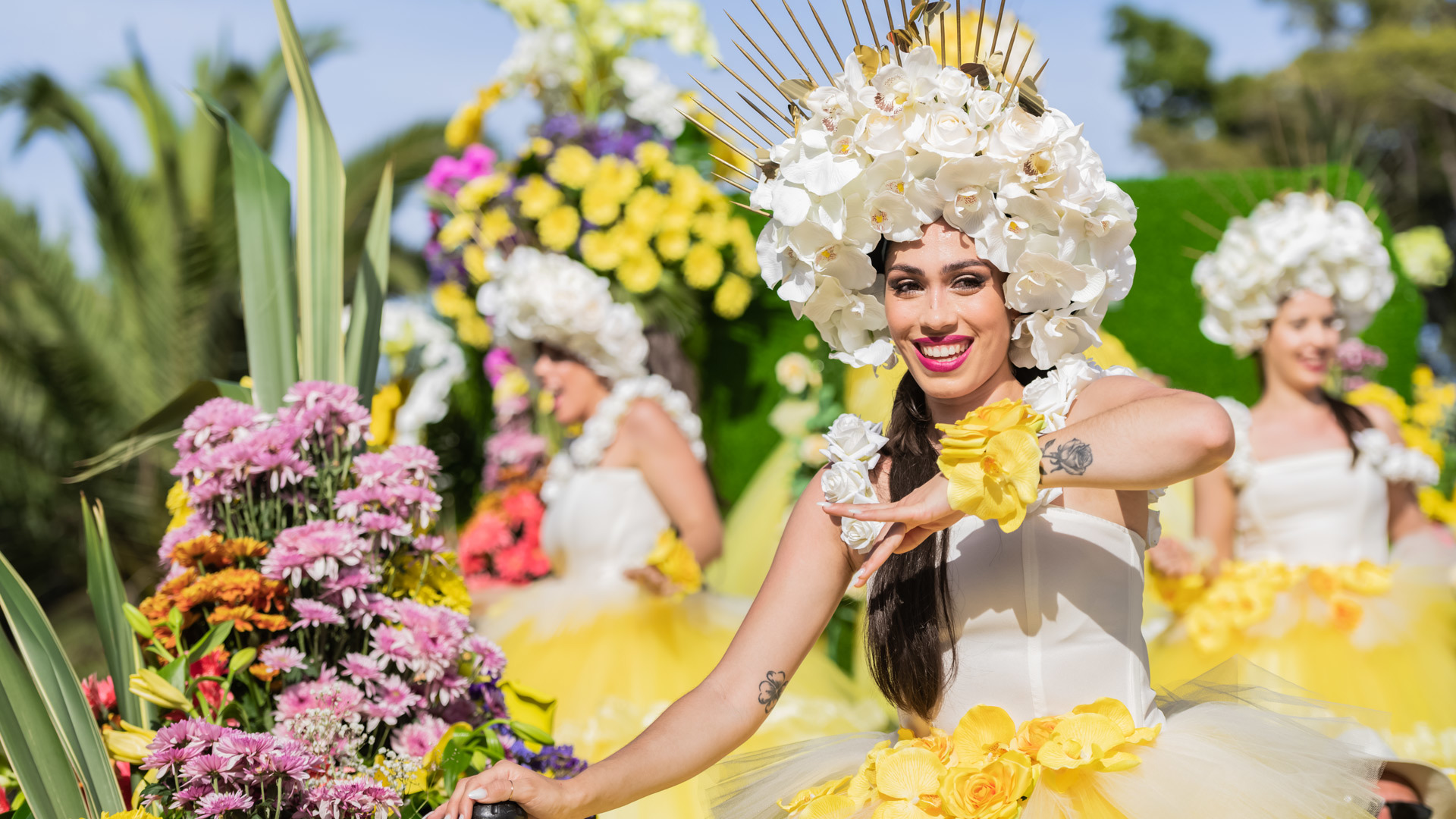
The perfume of thousands of blooms like lilies, jasmine, and marigolds wafts over the cheering crowdsvisitportugal.com. A poignant event during the festival is the “Wall of Hope” ceremony: children place flowers on a wall in Praça do Município, symbolizing wishes for world peace. The festival also includes flower markets, classical concerts in botanical gardens, and special displays – in past years there have been floral carpets competition and even flower fashion shows.
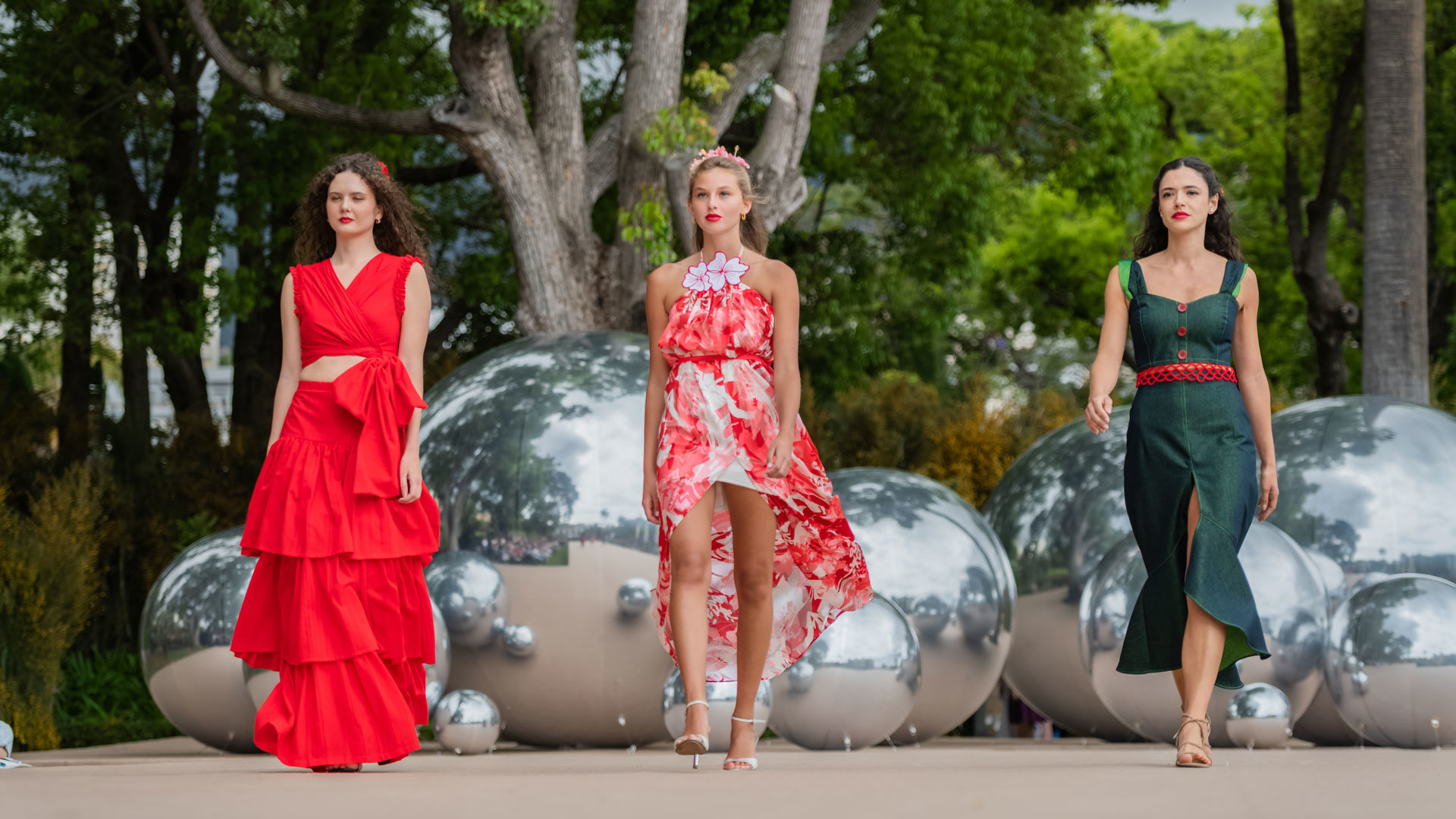
The Festa da Flor showcases Madeira’s apt nickname, “Ilha Jardim” (Island Garden), in the most enchanting way. It’s a photographer’s dream and a feast for all senses – you’ll truly feel spring’s renewal spirit here.
Where: Funchal – Every Saturday in June
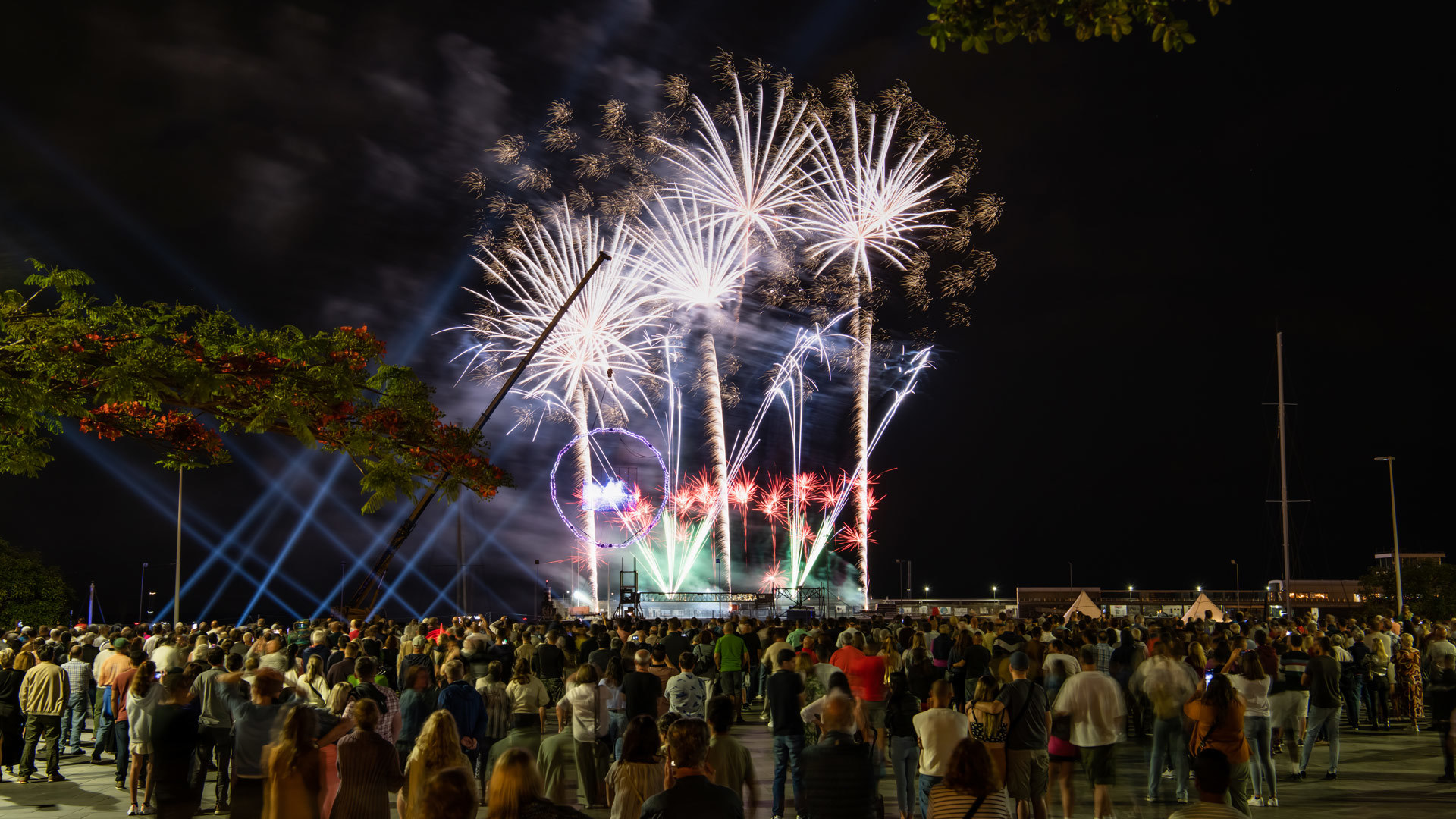
What: June in Madeira brings the Atlantic Festival, a month-long series of events whose biggest draw is a spectacular fireworks competition lighting up Funchal’s skies each Saturday. For four consecutive Saturdays, different international teams put on a pyromusical show – essentially a fireworks display choreographed to music – over Funchal’s harbor.
Locals and visitors gather along the seafront promenade and aboard boats to watch the night sky explode in color reflected on the Atlantic, all synchronized to thematic soundtracks (classical, rock, or world music) that boom from speakers. At the end of the month, one team is crowned the winner based on audience votes. These firework nights are truly jaw-dropping (Madeira once held the Guinness World Record for largest fireworks show during New Year’s). Alongside the fireworks, the Atlantic Festival features the Madeira Music Festival (classical performances in historic venues) and street entertainment celebrating the start of summer.
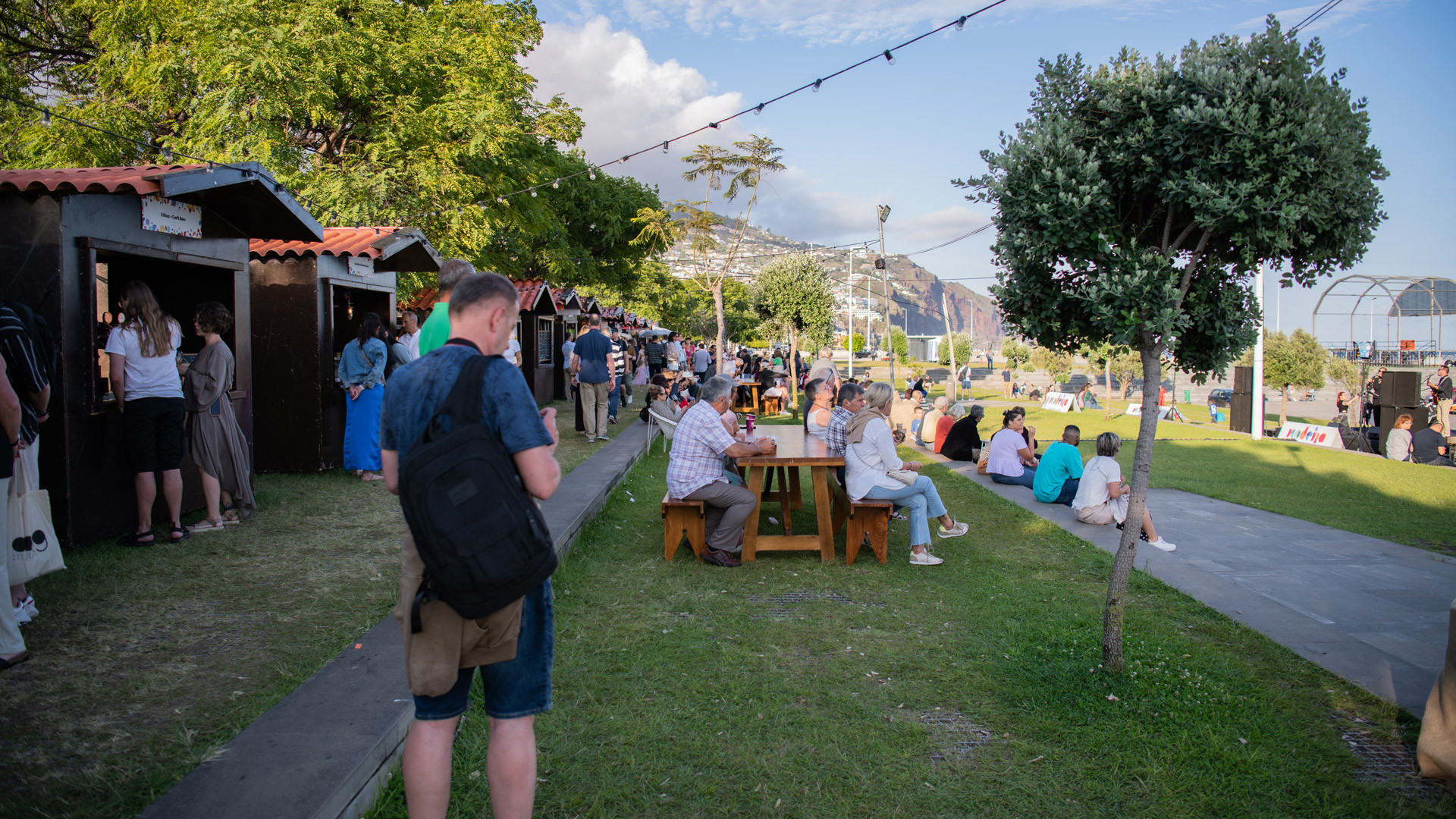
It’s essentially Madeira’s summer kickoff – blending culture and pure visual spectacle. If you love fireworks, Madeira in June is the place to be; imagine enjoying a warm evening with a passionfruit cocktail in hand, with fireworks bursting above – pure magic.
Where: Funchal & Estreito de Câmara de Lobos – Late Aug through first week of Sept
What: As the grape harvest begins, Madeira toasts its famous wines with a delightful Wine Festival. In Funchal, the central promenade is decorated with barrels and grape vines, and there are daily wine tastings from Madeira Wine producers (yes, you can sample the renowned fortified Madeira wine in its many styles – Sercial, Bual, Malvasia, etc.).
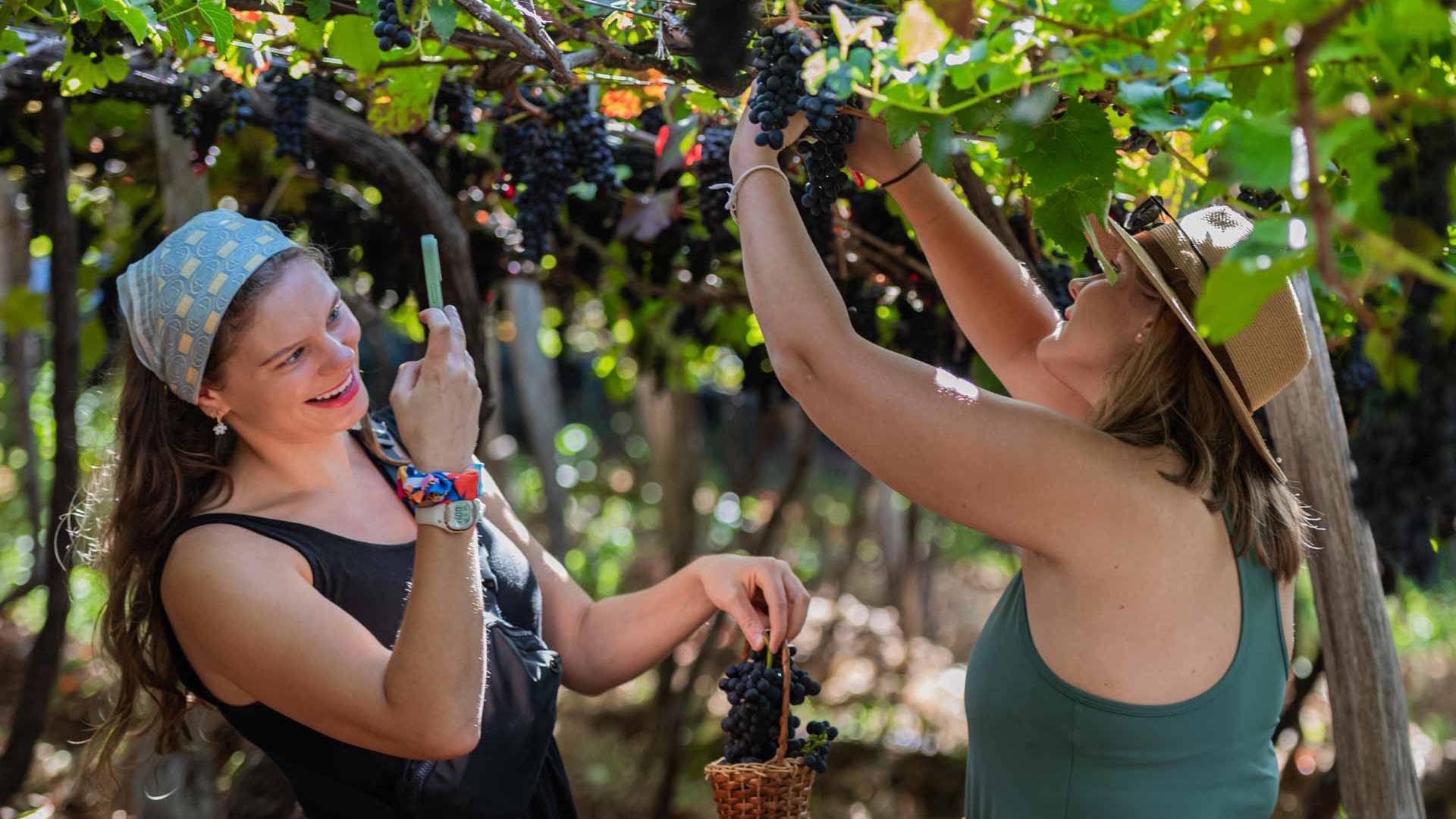
Folklore groups perform traditional dances like the bailinho; street stalls offer grape products and local food. One of the most fun events is the “live grape stomping” in Funchal – tourists are invited to help crush grapes by foot in large vats, re-enacting old-school winemaking (with plenty of laughter and purple feet!).
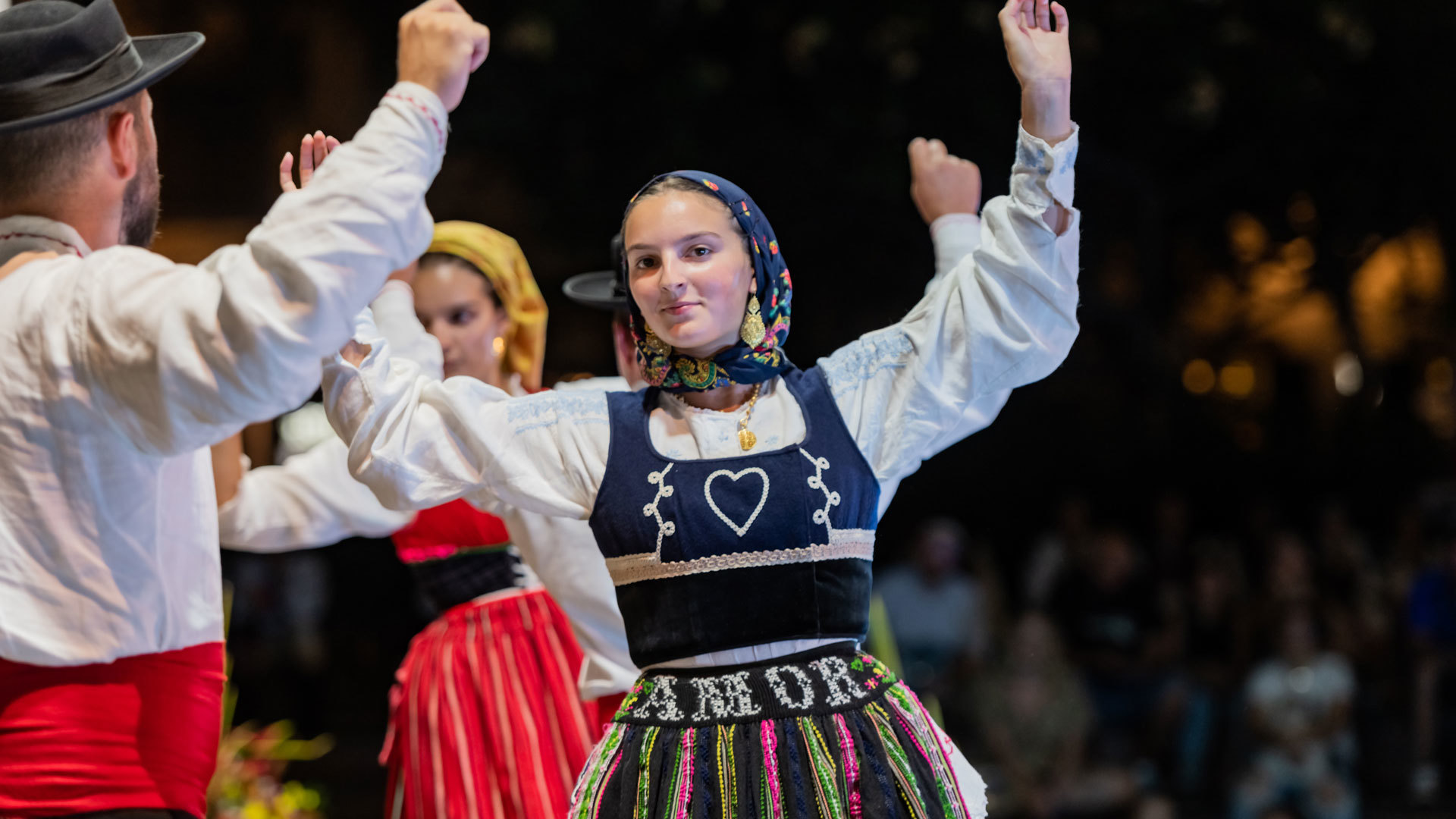
The festival then moves to the vineyards: in the village of Estreito de Câmara de Lobos (the heart of Madeira’s wine country), there’s an authentic grape harvest parade. Locals dressed in regional costume parade with baskets of grapes, singing harvest songs, followed by an communal treading of grapes in a winepress. It’s a joyful celebration of an island tradition dating back to the 15th century.
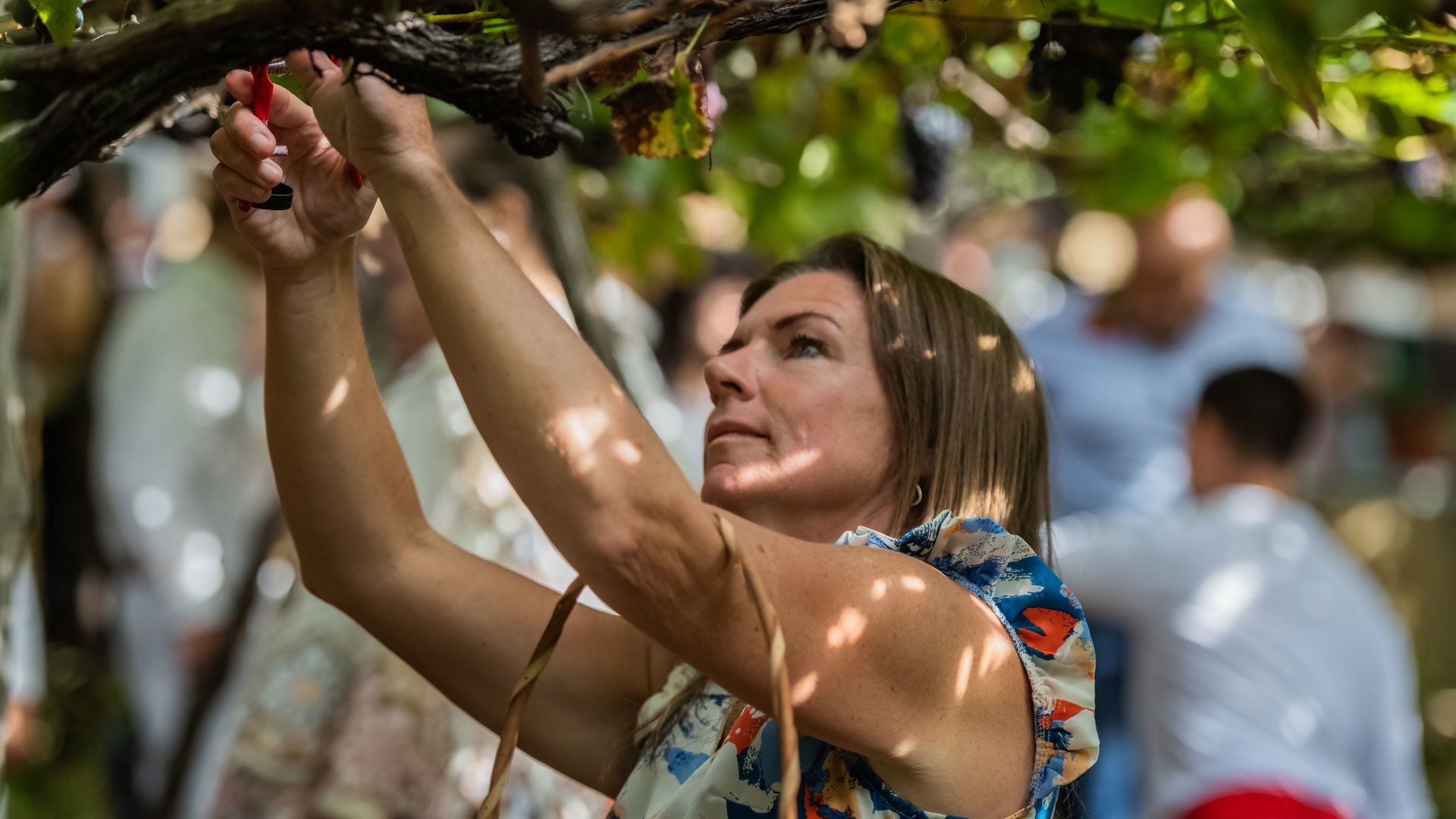
Whether you’re a wine connoisseur or not, this festival is a chance to immerse yourself in Madeira’s culture and, of course, sip some excellent Madeira wine in situ. Evenings end with open-air concerts and fireworks, making it a full-bodied experience in every sense.
Where: Funchal – Night of December 31
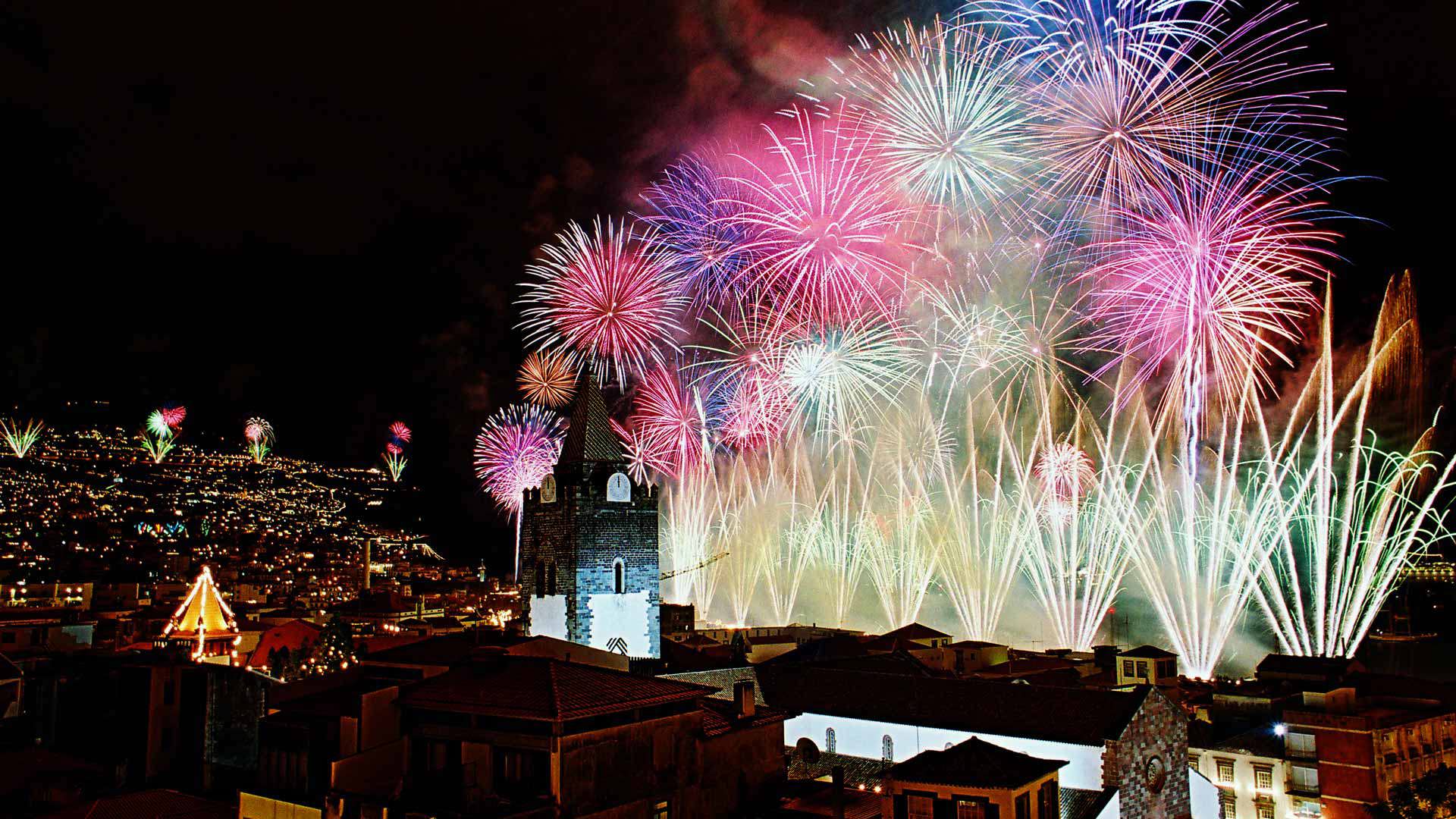
What: To cap off the year, Madeira’s New Year’s Eve celebration is nothing short of legendary. In fact, Funchal held the Guinness World Record for the largest fireworks display in the world (2006–2012). As midnight approaches, cruise ships fill the bay and every viewpoint around the amphitheater-shaped city is packed with people eagerly waiting. Then at the stroke of midnight – BOOM! – the sky around Funchal is set ablaze with a panoramic 360° fireworks show launched from about 50 posts around the city and hills.
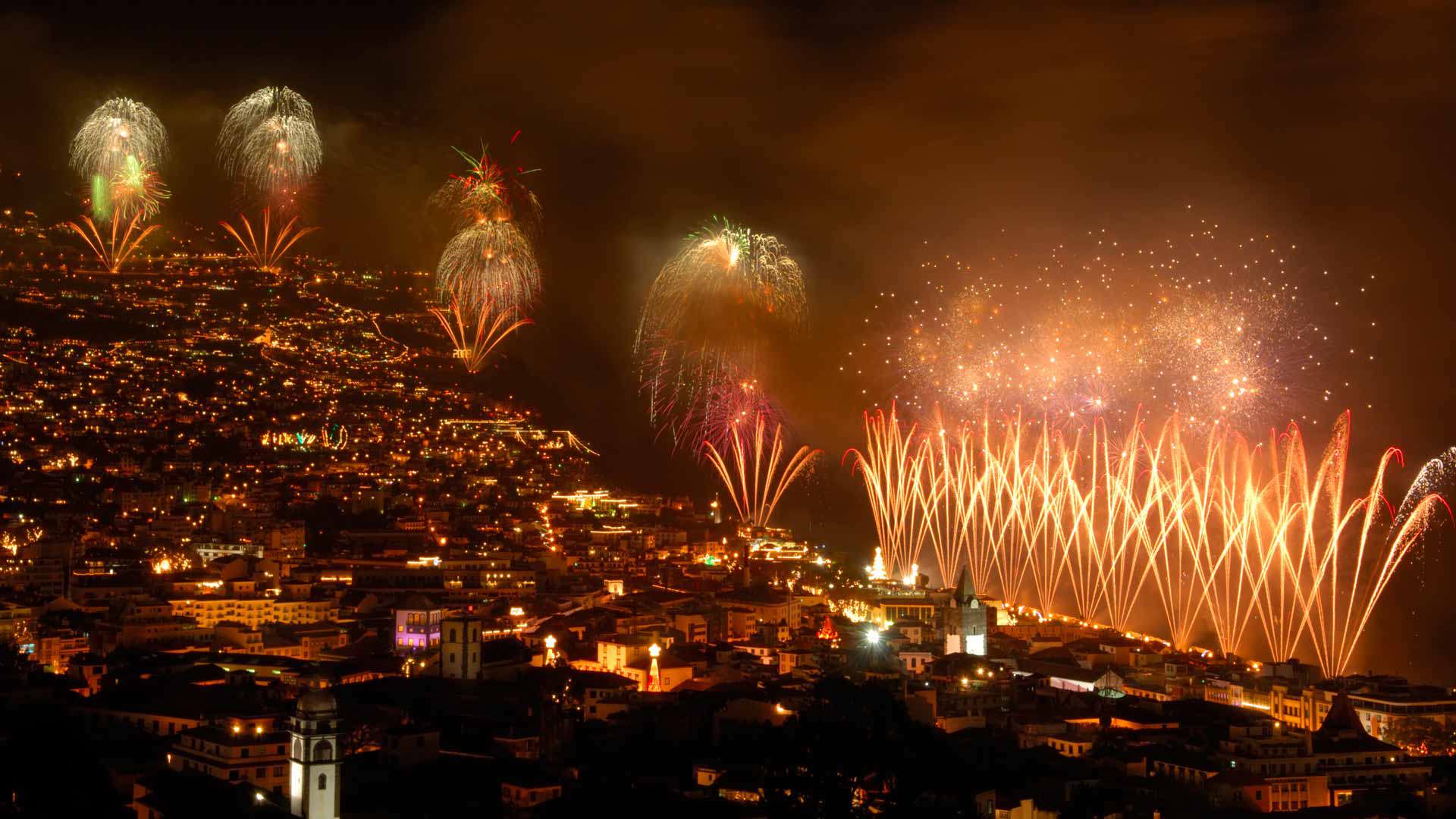
Cascades of color rain down over the bay, synchronized in a carefully orchestrated sequence lasting a full 8–10 minutes. The echo of the explosions across the mountains and the cheering of tens of thousands of spectators create an exhilarating atmosphere.
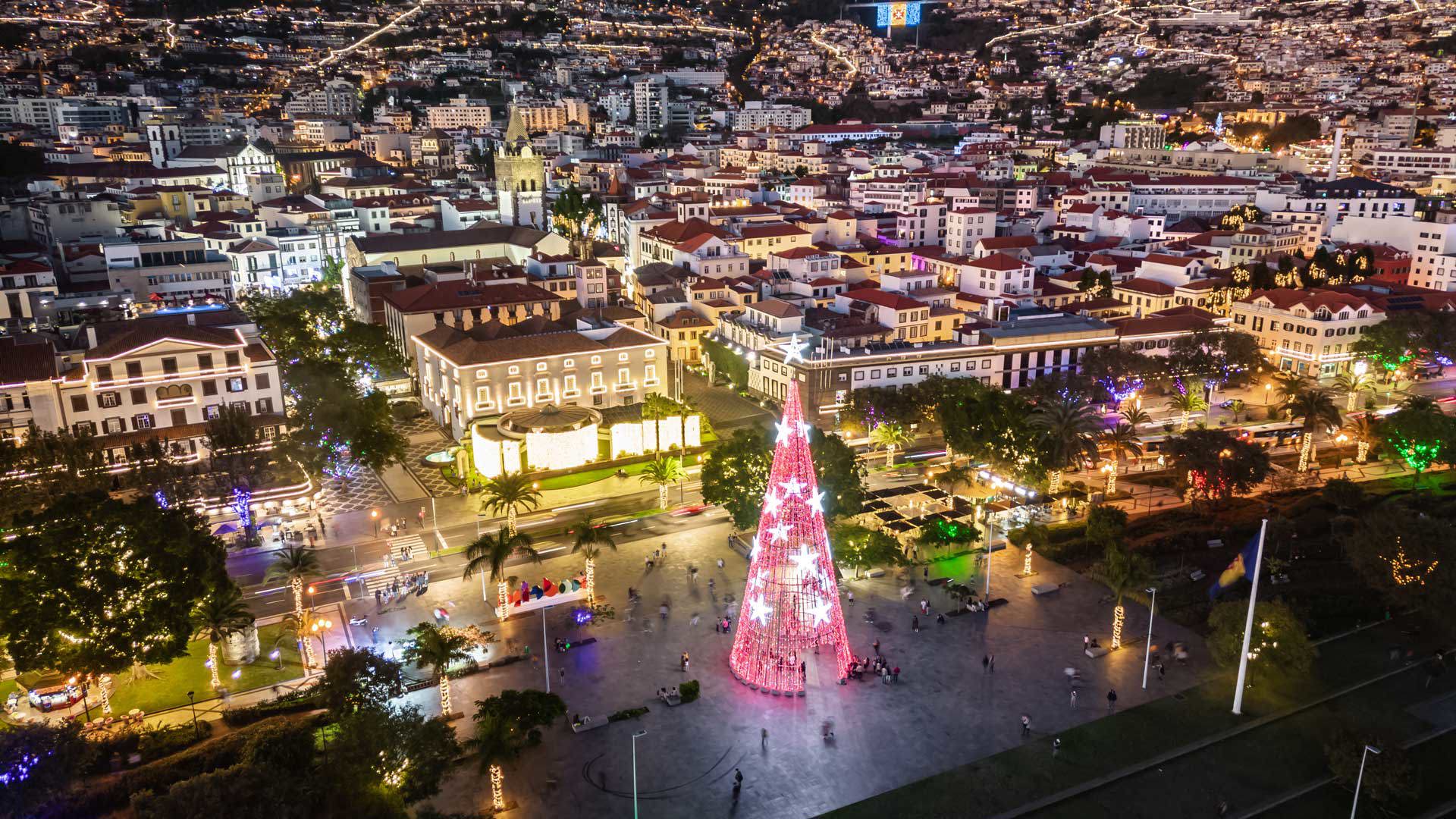
Many people enjoy the show from hotel rooftops or from the deck of boats for a special perspective. Before the fireworks, there are street parties and concerts, and after, the celebration continues with dancing in the streets into the early hours of January 1. It’s a truly bucket-list New Year’s experience – a fiery welcome to the new year in one of the world’s most beautiful island settings. (Insider tip: If you plan to be in Madeira for this, book well in advance – it’s high season due to this event.)
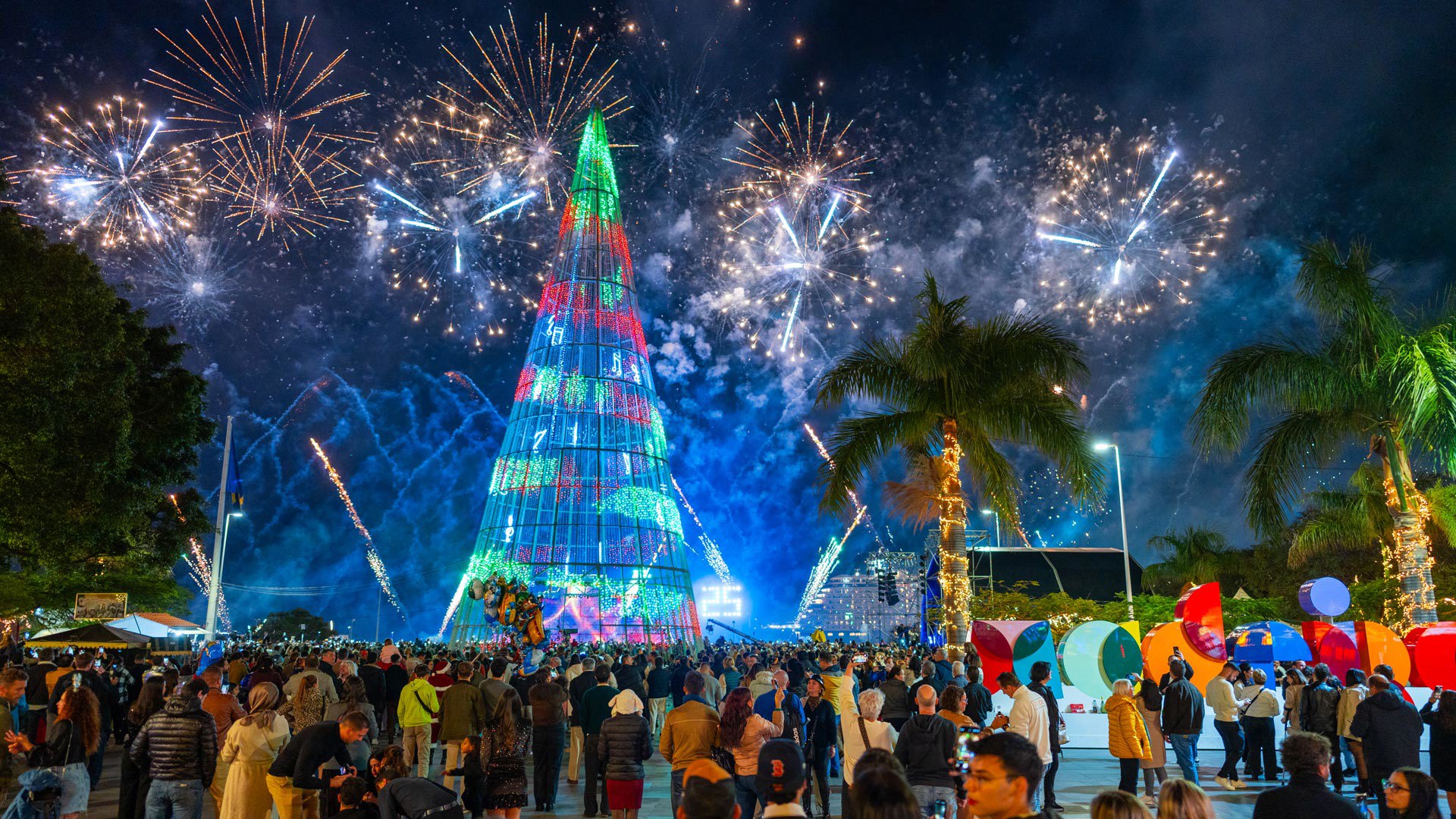
(Madeira also celebrates numerous local saints’ festivals (festas) in its villages, like the lively Festa de São Pedro in Câmara de Lobos (late June) and Festa de Nossa Senhora do Monte in August in Monte, which includes the famous toboggan rides. There’s also a Madeira Nature Festival in October focusing on outdoor sports. But the above are the island’s marquee events. Whenever you visit Madeira, chances are you’ll encounter a festival or “arraial” – Madeirenses love a good celebration and welcome visitors to join in.)
The Azores, Portugal’s mid-Atlantic archipelago, have a festival scene deeply rooted in religious devotion and local tradition – yet they also host some contemporary cultural events. Being remote islands, their festivals often retain a charming authenticity. Here are the Azores festivals worth the trip (or timing your island-hopping around):
Where: Ponta Delgada, São Miguel Island – 5th Sunday after Easter (usually May)
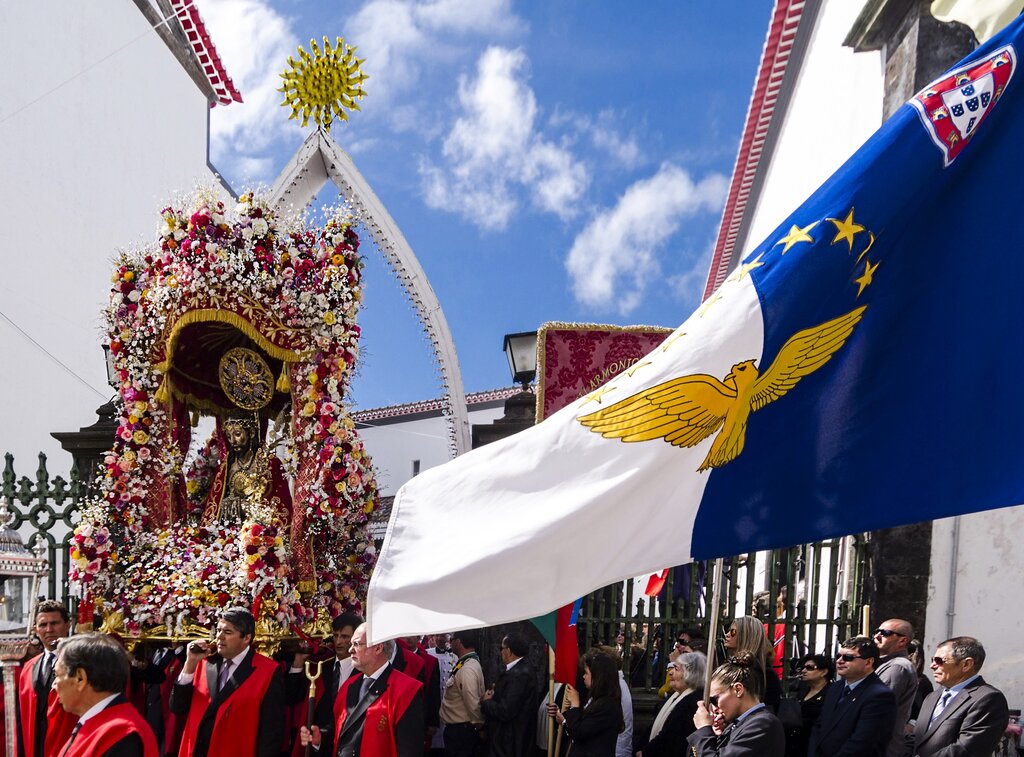
Where: Ponta Delgada, São Miguel Island – 5th Sunday after Easter (usually May)
What: The Feast of the Lord Holy Christ of the Miracles is the Azores’ largest religious festival and one of Portugal’s most important pilgrimages. Centered on a revered 16th-century image of Christ, it draws Azorean diaspora from around the world back to São Miguel each year. The main event is a solemn procession on Sunday: the richly adorned statue of Senhor Santo Cristo is carried through Ponta Delgada’s streets under a canopy of flowers and lights, moving to the steady drumbeat of marching brotherhoods.
Residents decorate the route with intricate carpets of colored sawdust and flowers; balconies are draped in red and gold fabrics. The atmosphere is one of profound faith – many walk the procession barefoot or fulfill vows. In the evening, the city shifts to celebration with food stalls and concerts, but never losing the respectful tone of the occasion. During the week, there are also smaller processions, nightly rosaries, and a large outdoor Mass. “Since the 17th century, the Festas … climax with a procession through the streets of Ponta Delgada” – it’s a tradition that has only grown over time. Even if you’re not religious, witnessing this convergence of art (the floral carpets), music, and devotion in the mid-Atlantic is deeply moving. Plus, you can enjoy the Azorean street food sold around – like massa sovada (sweet bread) and local sausages – amid the festive but reverent gathering.
Where: Angra do Heroísmo, Terceira Island – Week around St. John’s Day (June 24)
What: Terceira’s historic capital, Angra, hosts the Sanjoaninas, touted as “the biggest profane festivals in the Azores”. These festivities last over a week and combine elements of a fair, cultural festival, and city-wide party – all in honor of St. John. Each day has its highlights: bullfights-in-the-street (Touradas à Corda) are held on several afternoons (a Terceira specialty where bulls run a tethered route through streets – exhilarating but relatively controlled) to the delight of locals and tourists.
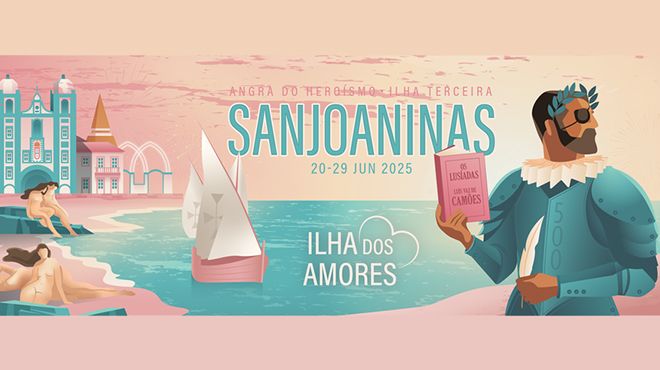
There are parades almost every day: an opening Cortejo Alegórico with floats, an ethnographic parade showcasing local customs, and the popular “Dance of the Mordomas” with women in traditional dresses carrying folk art. Live concerts, theater shows, and art exhibitions fill the agenda. The city’s streets are strung with lights and St. John’s decorations, and you’ll find bailinhos (impromptu street dances) and plenty of kiosks selling local cosidos (donuts) and Kima (pineapple soda). One unique event during Sanjoaninas is the “Bodo de Leite” parade – a procession of dairy farmers with cows, distributing fresh milk and massa sovada to onlookers, rooted in thanking St. John for good pastures. By night, Angra’s central plaza turns into an open-air concert venue, and the partying carries on into the early hours. Sanjoaninas truly encapsulate Terceira’s slogan of “festivity island” – it’s a joyous Azorean carnival-summer-fair hybrid, set in a UNESCO World Heritage city. If you want to experience Azorean hospitality and revelry, late June on Terceira is the time and place.
Where: Horta, Faial Island – First full week of August
What: Horta’s Sea Week is the Azores’ premier nautical festival, celebrating the ocean that surrounds and sustains the islands. For one week, the marina of Horta – already famous among yachties – becomes a hub of seafaring events. By day, there are yacht regattas, whaleboat races (using traditional Azorean whaling boats now repurposed for sport), and even competitions like sailing a raft made of espírito santo (a local wood). The channel between Faial and Pico islands fills with colorful sails. Spectators can take whale-watching trips or try diving and canoeing as part of the festivities. On land, folk groups and marching bands perform along the waterfront, and the award-winning Scrimshaw Museum (whale ivory carving) holds open days.
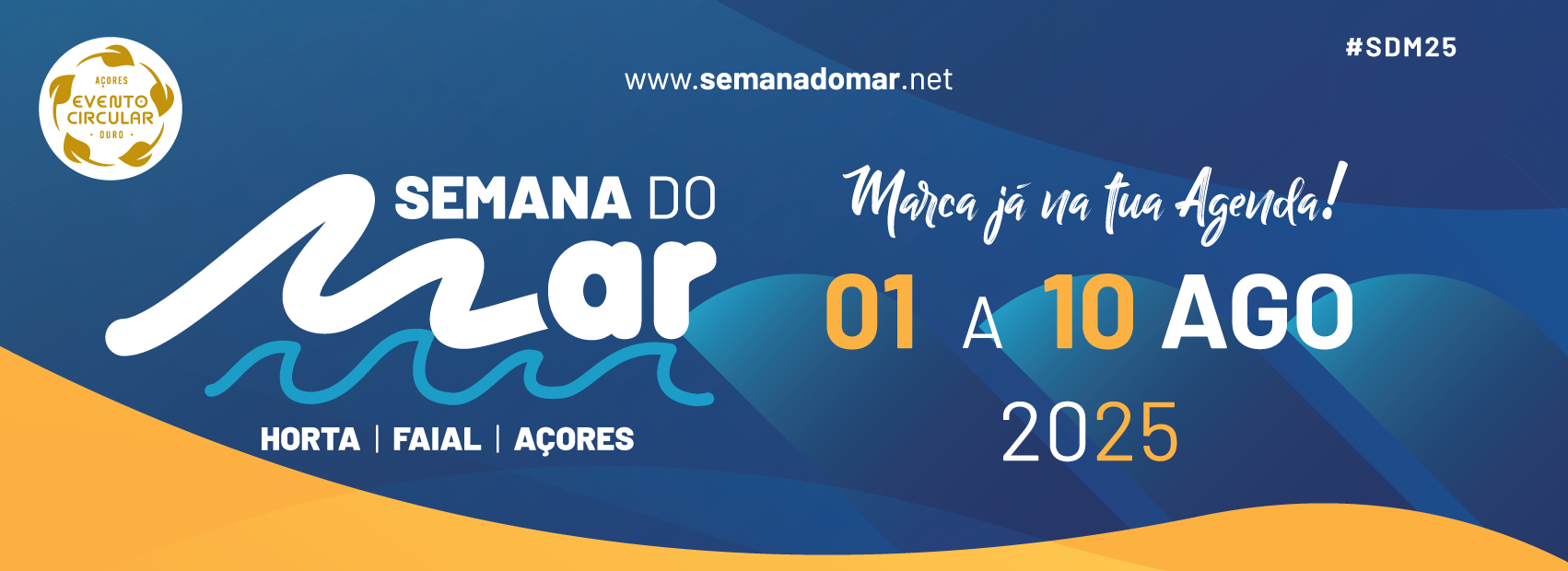
By night, Horta parties: the city hosts concerts on multiple stages, ranging from rock to folklore, and the internationally diverse sailing community contributes to the fun – it’s not uncommon to meet people who sailed from afar to be here. A unique Sea Week tradition is the Nautical Parade, where ships of all sizes, decorated with lights, parade in the bay, often accompanied by fireworks. The festival concludes with a bang – a major fireworks show over Horta’s harbor, viewed against the silhouette of Pico’s volcano across the channel. Sea Week perfectly embodies the Azorean spirit of adventure and camaraderie on the waves. For any ocean lover, it’s a fantastic time to visit Faial – you can revel with locals and sailors, with the scent of saltwater and sound of sea shanties in the air.
Where: Santa Maria Island – Third weekend of August (4 days)
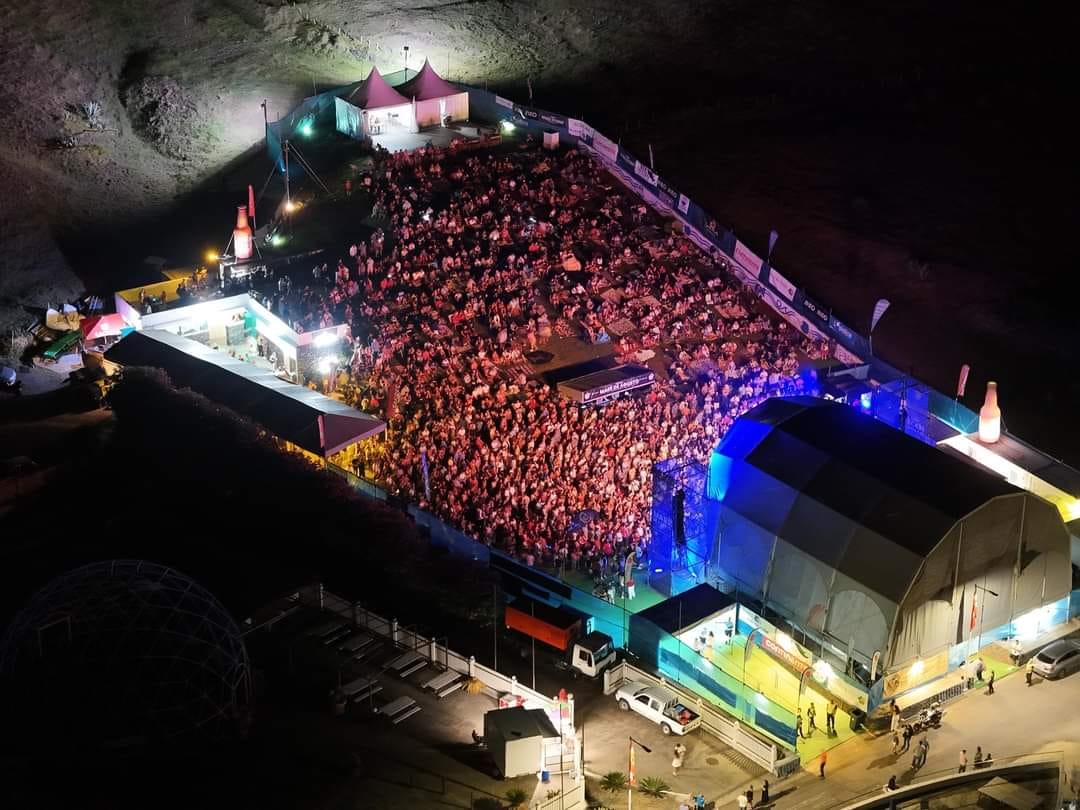
What: Maré de Agosto (August Tide) is a laid-back music festival on Santa Maria, the southeasternmost (and warmest/driest) Azores island. Since 1984, it’s brought an impressive array of world and Portuguese music to this tiny island’s idyllic beach. Picture this: a stage set by the sand of Praia Formosa – an amphitheater of cliffs and palm trees – where audiences barefoot in the sand groove to tunes under the stars. The festival’s genre mix is eclectic: you might catch a reggae band from Cape Verde, a fado-rock fusion group from Lisbon, a funk act from Angola, and local Azorean rock bands all in one lineup.
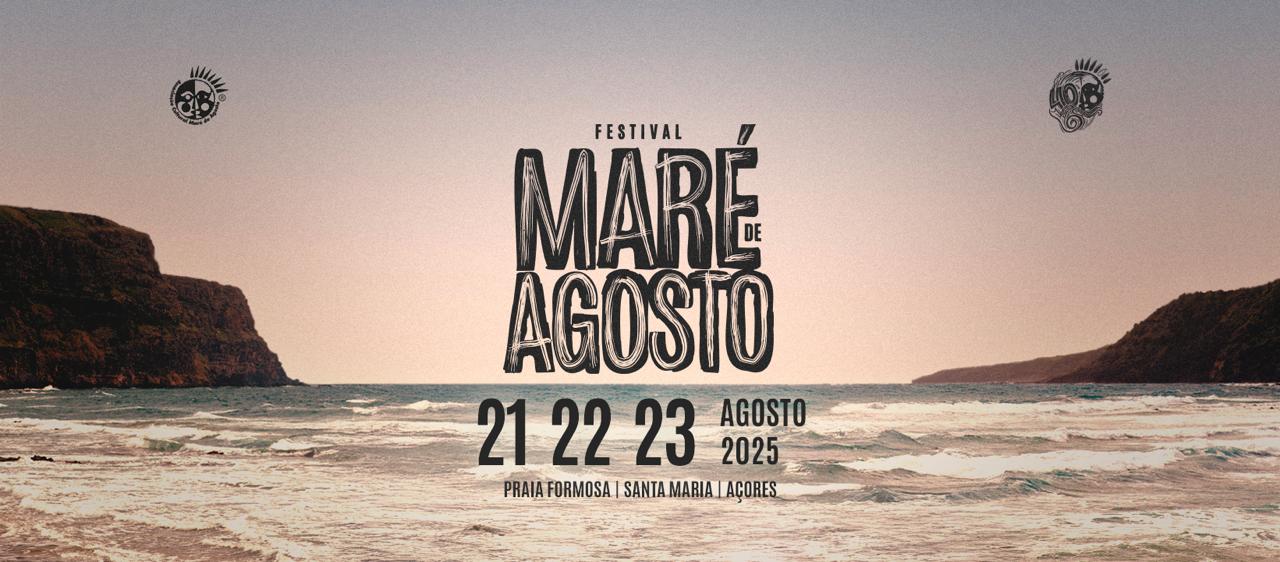
Past performers have included Inner Circle, Alpha Blondy, and many Lusophone artists. By day, festival-goers chill on the beach or explore Santa Maria’s charming villages; by night, the cove fills with the sounds of live music echoing off the cliffs. It’s an intimate festival – think a few thousand attendees – which creates a friendly communal vibe (artists and audience often mingle freely). Camping is common on-site or nearby, making it a full beach+music holiday.
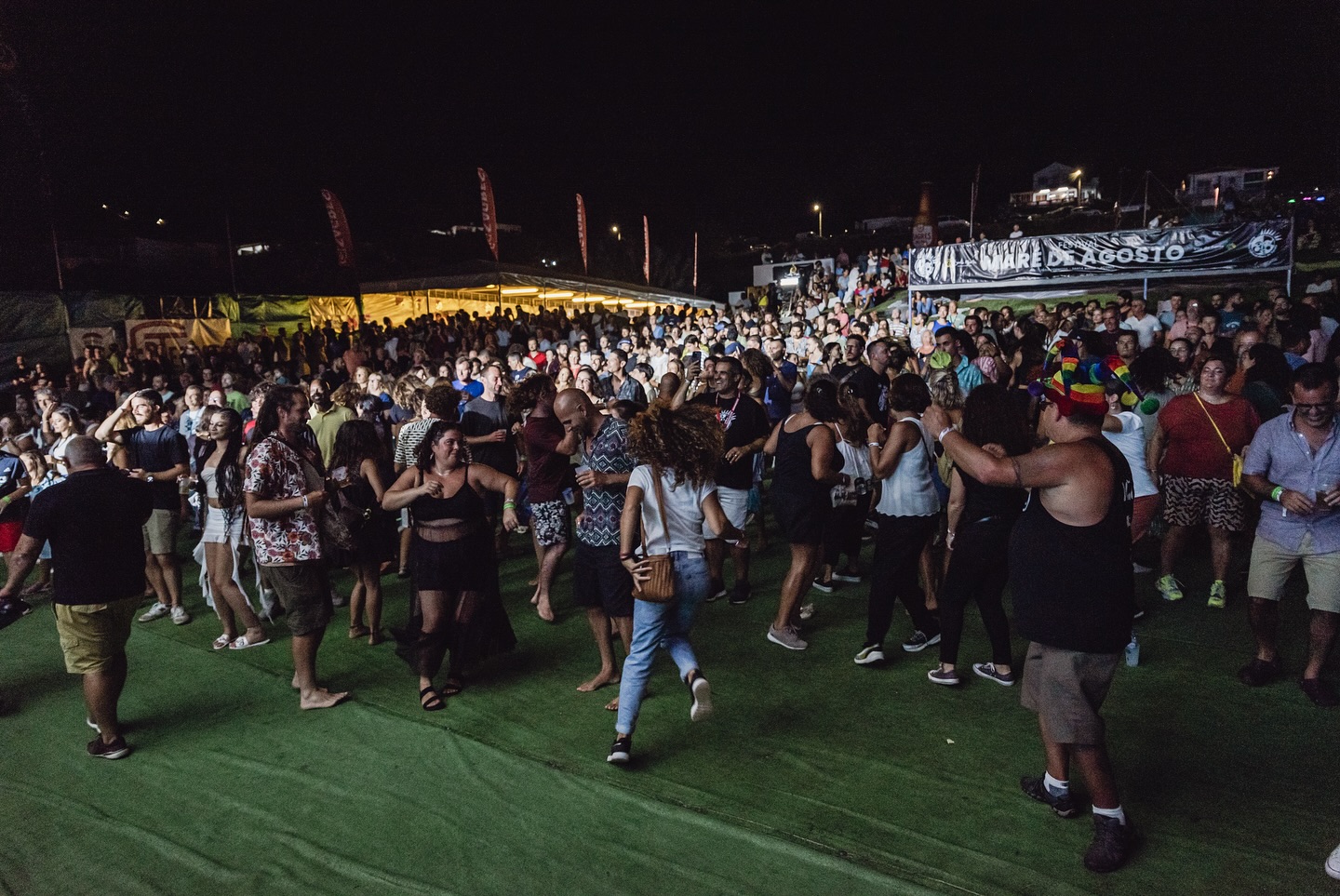
Past performers have included Inner Circle, Alpha Blondy, and many Lusophone artists. By day, festival-goers chill on the beach or explore Santa Maria’s charming villages; by night, the cove fills with the sounds of live music echoing off the cliffs. It’s an intimate festival – think a few thousand attendees – which creates a friendly communal vibe (artists and audience often mingle freely). Camping is common on-site or nearby, making it a full beach+music holiday.
Where: All Azorean islands (particularly Terceira and São Jorge) – Easter to Pentecost (peaking on Pentecost Sunday)
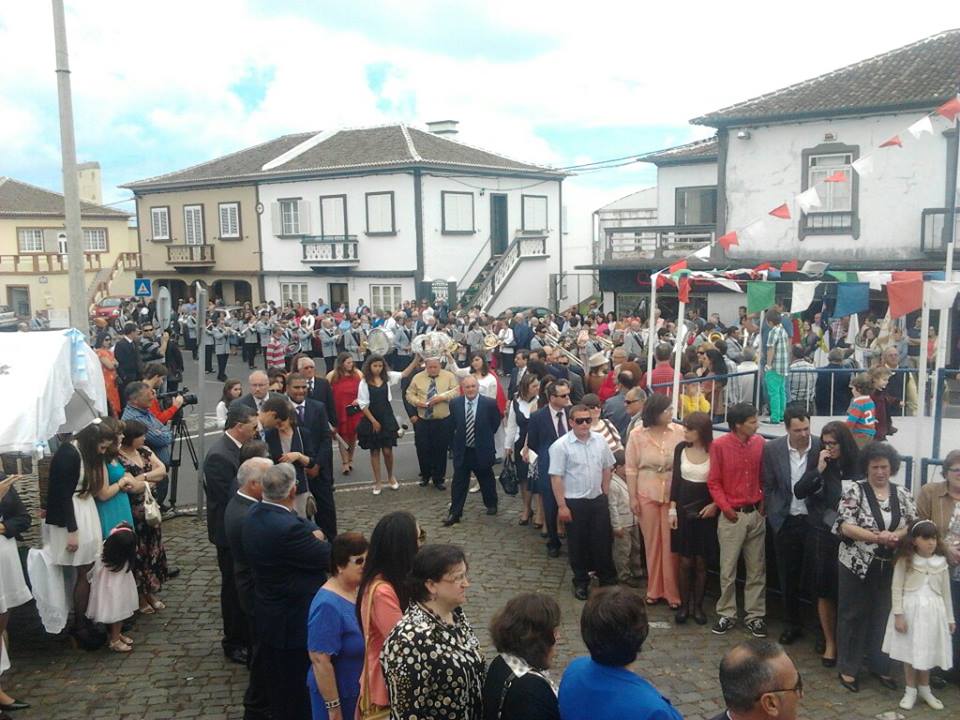
What: The Holy Spirit festivals are the most characteristic tradition of the Azores, celebrated in every village on every island over the seven weeks after Easter. While not a single event in one location, together they form the spiritual backbone of Azorean culture. Each Sunday, an “Império” (small chapel) becomes the center of community gatherings. The rituals involve the crowning of an “Emperor” or “Empress” (often a child) with a silver Holy Spirit crown, processions with the Holy Spirit flags and crown, and the distribution of food to the community, symbolizing charity and brotherhood.
In many villages, huge cauldrons of “Sopa do Espírito Santo” (a rich bread and meat soup) are prepared and freely shared in a communal meal along with wine and sweet bread (folar). Folklore music, hymns, and the release of doves often accompany the ceremonies. The largest of these events, such as in Ribeira Grande (São Miguel) or in Praia da Vitória (Terceira), can draw thousands and include parades of folk groups and street decorations. But even the smallest parish’s celebration is heartfelt and welcoming – visitors are often invited to sit and eat. The culmination is on Pentecost Sunday, when each island’s main churches hold big ceremonies and processions to honor the Holy Spirit. Experiencing a Holy Spirit festa offers insight into Azoreans’ strong community bonds and faith. It’s not commercial or touristy – it’s an authentic religious festival where the spirit of sharing and unity is palpable. If you’re in the Azores in spring, don’t be shy to join a local Império feast; you’ll be treated like family. viladaslajes.pt
(Each Azorean island has its unique festas: e.g., Sanjoaninas on Terceira we covered, Semana do Mar on Faial, Festas da Praia in Praia da Vitória (Terceira) in August mixing concerts and nautical events, and Nossa Senhora dos Anjos on Santa Maria (mid-August, with a famous procession commemorating Columbus’ visit). The above selection highlights the Azores’ deep-rooted traditions (Holy Spirit festivals), their largest religious event (Santo Cristo), and some cultural festivals that enliven the summer. Being remote, the Azores’ festivals maintain a special authenticity – visitors are welcomed into celebrations that have changed little over generations.)
| Festival | Location | Typical Dates | Ticket/Entry |
|---|---|---|---|
| Rock in Rio Lisboa | Lisbon | Mid-June (biennial) | €84 (1-day pass) |
| NOS Alive | Oeiras (Lisbon) | Early July (3 days) | €79 (1-day); €190 (3-day pass) |
| Primavera Sound Porto | Porto | Early June (3 days) | €75 (1-day); €195 (full festival) |
| MEO Sudoeste | Zambujeira do Mar | Early August (5 days) | €69 (1-day); ~€139 (full pass) |
| Festival MED (Loulé) | Algarve | Late June (3–4 days) | €12 (1-day); €30 (3-day pass) |
| São João Festival (Porto) | Porto | June 23–24 | Free (public street festival) |
| Santo António (Festas de Lisboa) | Lisbon | June 12–13 (month-long) | Free (public street festival) |
| Flower Festival (Madeira) | Funchal | Apr/May (2 weeks) | Free (street parades; some paid shows) |
| Santo Cristo Festival | Ponta Delgada (Azores) | May (dates vary) | Free (religious procession) |
Note: Many cultural/traditional festivals (like the saints’ festivals, carnivals, Holy Spirit festas, etc.) are free to attend – just show up and enjoy. Costs to consider are mainly food, drink, and possibly accommodation price surges during peak festival dates. For ticketed music festivals, it’s wise to buy early for best prices. Also, remember to book lodging well in advance for major events (Lisbon in June, Porto in São João, Funchal for New Year’s) as hotels can fill up and rates increase.
Portugal’s festivals offer something for everyone year-round. Plan your trip around one (or several) of these events and you’ll not only have a great time, but also gain a deeper appreciation of Portugal’s lively traditions and warm community spirit. Boa festa! 🎉🇵🇹
A: It depends on your interests. Generally, June is a fantastic month because it’s packed with the “Popular Saints” festivals (Santos Populares) – especially in Lisbon (Santo António on June 12/13) and Porto (São João on June 23/24). The weather is warm and you can experience massive street parties in these cities.
Summer in general (June through early September) has the highest concentration of festivals, including nearly all the big music festivals (NOS Alive, MEO Sudoeste, Boom, etc.) and many local traditional fairs and pilgrimages.
September is also great because the weather is still nice, crowds are a bit thinner, and you have wine harvest festivals and the continuation of summer music events.
If you prefer religious and traditional festivals, spring (around Easter) is ideal – you could witness Holy Week in Braga (March/April) and the Santo Cristo procession in Azores (May). In summary, for a first-timer looking for vibrant celebrations, late June and early July probably offer the most variety in a single trip. But whenever you go (even in winter), you’ll likely find some local festivity happening – Portuguese love their festas year-round!
A: Many of the cultural and traditional festivals are completely free to attend. For example, street festivals like São João in Porto and Santo António in Lisbon cost nothing – you just show up and join the fun (perhaps bring some cash to buy sardines or drinks from vendors). Religious festivals (Holy Week, Santo Cristo in Azores, Fatima pilgrimages) are also free and open to all. Even carnivals in towns like Torres Vedras or Loulé just charge a nominal fee or none at all for standing along the parade route.
On the other hand, commercial music festivals and certain events do require tickets. Big multi-day festivals such as NOS Alive, Rock in Rio, Primavera Sound, MEO Sudoeste, Boom Festival etc., require purchasing passes – these can range roughly from €40–€80 for a single day to €100–€200 for multi-day passes.
Some smaller town events may have ticketed seating for stands or paid VIP areas, but usually you can still watch for free from other spots. Medieval fairs sometimes have a small entry fee (e.g., Óbidos Medieval Fair charges a few euros at the gate). Overall, you can experience a lot without spending on admission. It’s always good to check the specific festival’s website; if it’s a concert-type festival or a controlled venue, expect a ticket, whereas if it’s a city-wide celebration, it’s typically free.
A: Some festivals stand out on a national (even international) level for their scale or uniqueness. Here’s a shortlist of Portugal’s most famous must-see festivals:
Festas de Lisboa (Santo António) – Lisbon’s June street parties, culminating in the June 12th marchas parade. The whole city turns into one big celebration of music, food, and community.
São João do Porto – Porto’s iconic St. John’s Eve festival on June 23rd with the midnight fireworks and hammer tradition. It’s often cited as one of Europe’s best street festivals.
Carnival in Portugal – particularly Torres Vedras (for authenticity) and Madeira’s Carnival in Funchal (for spectacle). These show two very different styles of celebrating Entrudo.
Flower Festival in Madeira – A stunning spring festival famed for its floral floats and ceremonies. It’s unique to Madeira and visually breathtaking.
Boom Festival – An alternative culture/electronic music festival (biennial, odd years) in Idanha-a-Nova. It’s world-renowned in the psytrance community and won awards for sustainability. If you’re into transformational festivals, Boom is legendary (but note it’s only every two years).
NOS Alive and Rock in Rio (Lisbon) & Primavera Sound (Porto) – These are Portugal’s top international music festivals, drawing big artists and crowds. If music is your priority, try to catch one of these.
Santo Cristo dos Milagres (Azores) – The sheer devotion and scale of this religious festival in Ponta Delgada make it famous among Portuguese. It’s an intense cultural experience.
New Year’s Eve in Madeira (Funchal fireworks) – Not a “festival” in the traditional sense, but the fireworks show is world-famous and draws visitors globally for New Year’s. It’s an unforgettable way to ring in the new year.
Of course, “shouldn’t be missed” depends on your interest: for history – go to Óbidos Medieval Fair; for foodies – hit Olhão Seafood Fest or a wine festival; for adventure – attend an Azorean bull run or Sea Week in Faial. But the above list has something of a “greatest hits” of Portuguese festivals known for wowing attendees.
A: A few practical and cultural tips can enhance your experience:
Plan Ahead for Accommodation: Popular festivals like those in Lisbon, Porto, or Tomar (Tabuleiros) attract huge crowds. Hotels can fill up and prices rise. Book your stay well in advance (several months if possible) for big events. For multi-day festivals in rural areas (Boom, Sudoeste), consider camping on-site if provided – it’s often part of the experience (but bring earplugs for sleep!).
Embrace the Crowds and Schedule: The schedule might not always be strict – processions may start late, parades can move slowly. Portuguese take a relaxed approach. Also, be ready for crowds – for example, Porto’s riverside on São João will be shoulder-to-shoulder. Stay patient, go with the flow, and you’ll have fun.
Participate Like a Local: Don’t just spectate – participate! Buy a manjerico (basil plant) with a poem in Lisbon, and offer it to someone (a tradition). In Porto, grab a plastic hammer and tap strangers on the head playfully. In the Azores, accept that cup of Holy Spirit soup from locals – it’s offered with goodwill. Dressing up often adds to the fun: wear white at a Noite Branca, or don a simple costume piece during Carnival.
Safety and Etiquette: Portuguese festivals are generally safe and friendly. Still, in very crowded parties keep an eye on your belongings (petty theft can happen in tourist-dense events). If there are bull runs (Azores or Colete Encarnado), observe safety zones – locals know where to stand. For religious events, dress modestly if you plan to enter churches or join processions, and always be respectful when people are praying or during national anthems, etc.
Enjoy the Food & Drink: Festivals are a great chance to try local specialties. You’ll find stands for grilled sardines, bifanas (pork sandwiches), farturas (fried dough), regional sweets, and of course beer, wine, or sangria flowing. Lines can be long, so carry some snacks/water especially if you have kids. Most street fest food is very affordable.
Language: While English is understood in touristy festivals, many announcements or songs will be in Portuguese. Learning a few phrases (or festival-specific words like “Viva!” to cheer, or “Saúde!” for toasting) can endear you to locals. But even if you don’t speak Portuguese, a smile and enthusiastic attitude transcend language – locals will often take you under their wing to explain traditions.
In short: prepare logistics early, immerse yourself in the activities, mind basic safety, and savor the authentic atmosphere. Portuguese people are proud of their festivals and love when foreigners join the celebration respectfully. You’ll likely make new friends and amazing memories along the way!
A: Yes, with smart timing and travel planning you can string together multiple festivals in one visit. Portugal is not a huge country, and its transportation links (flights, trains, highways) are good. Here are a couple of strategies:
June “festival hopping”: June is perfect for this. For example, you could experience Santo António in Lisbon (June 12–13), then take the high-speed train or drive 3 hours north to Porto for São João (June 23). In between, perhaps stop in Coimbra or Braga to catch any local June events (Braga’s São João runs mid-June too). That’s two major festivals in one trip, plus sightseeing. If you time it right, you could even catch Évora’s São Pedro festival at end of June or Sintra’s São Pedro (June 29).
Summer music circuit: Many visitors plan trips around back-to-back music festivals. For instance, in mid-July attend NOS Alive in Lisbon, then the following weekend head to Super Bock Super Rock or Marés Vivas in Porto. Or do Primavera Sound (early June) in Porto, then Rock in Rio (late June) in Lisbon. Since these are spaced by a week or two, it’s easy to travel in between – maybe do some beach days in the Algarve or cultural stops in between festival weekends.
Island combo: If you’re making the journey to the Azores or Madeira, consider extending your stay to catch festivals on the mainland or vice versa. For example, see the Flower Festival in Madeira (Apr/May), then in early June fly 1.5h to Lisbon for the Popular Saints. Or attend the Santo Cristo festival in São Miguel (Azores) in May, then hop to mainland for June events. TAP Air Portugal even allows stopovers in Lisbon, which you can use to your advantage.
Car rental road-trip: Some smaller regional festivals could be chained by renting a car. E.g., in early August, start at Olhão Seafood Festival (Algarve), then drive to Alentejo’s Crato Festival (late Aug), then continue to Porto for Vilar de Mouros (late Aug). You’d see Portugal top to bottom, with tasty and musical stops! It’s ambitious but doable with 2-3 weeks.
Always check exact dates as they can shift slightly each year (especially religious ones tied to Easter’s movement). Also consider catching a few days of one festival then moving on if you can’t stay for the finale. Many festivals have multi-day programs, so even a partial experience is rewarding. For example, if you can’t be in Tomar for the main Tabuleiros parade (which is only once in 4 years), visiting during the preceding days still lets you see the city decorated and maybe some smaller events.
In summary, yes – Portugal’s compact size and festival calendar make it feasible to attend several festivals in one trip. It might be a whirlwind, but many travelers do it and come away with a deeper appreciation of how diverse Portuguese celebrations are. Just ensure you give yourself some rest between big parties (the Portuguese stamina for all-night festas can be impressive!). Safe travels and Boas Festas (happy festivities)!